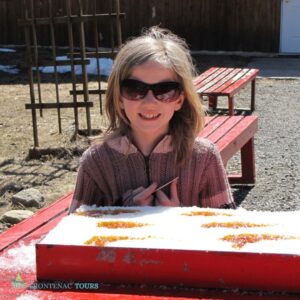
It’s maple sugar time!
Spring is coming, the sun is getting hotter and hotter even though the temperature is below zero Celsius. But also the snowfall is different, big wet flakes fall from the sky, it is the announcement that the maple sugar time starts.
I can taste the sugar in my mouth, even if I haven’t eaten yet, but my brain is racing to send me all my sugar shack memories. And if you think I am the only one, you are wrong. Because here, in Quebec, it is in our blood and our genes the sugar time. When I go on a touristic tour with my clients, I often say that I am a true québécoise, because in my blood there is 60% maple sap that was passed on to me by my ancestors.
The sugar time
Sugaring-off is a short 3 to 4 weeks time per year in March and April. It all depends on the temperature. Indeed, the temperature must be below 0 celsius at night and more than + 5 celsius during the day. But above all that the snow covers the foot of the trees. And then it is the time to let the maple sap run out of the trees.
Whether it’s for the traditional meal or the music, it is time to spend some quality moments with our families and friends. And it’s also the end of the winter.
For me, sugar time is above all a good meal with the family, with my friends at the sugar shack.
It used to be the time to see the neighbors again, to check in after a long winter, the end of Lent. The men could help each other to run through the maples to collect this precious water. But it was mostly a pretext to party and share a good meal.
Sugar shack menu
- Pea soup
- Baked beans with bacon (in maple syrup)
- Maple ham (of course)
- Sausage
- Ears of crisse ( deep-fried salted fatback , as a salty and crunchy side contrasting with the maple sugar taste)
- Creton (forcemeat-style pork spread)
- Boiled potato
- Omelette
- Egg boiled in syrup
- Meat pie
- Pickled beetroots
- Homemade Ketchup
Dessert
- Pancakes topped with maple syrup
- ‘Grand-père’ – fried donut drizzled with maple syrup
- Sugar pie
- Maple pudding ‘chômeur’
And of course you understand that you can pour as much maple syrup as you want on your plate.
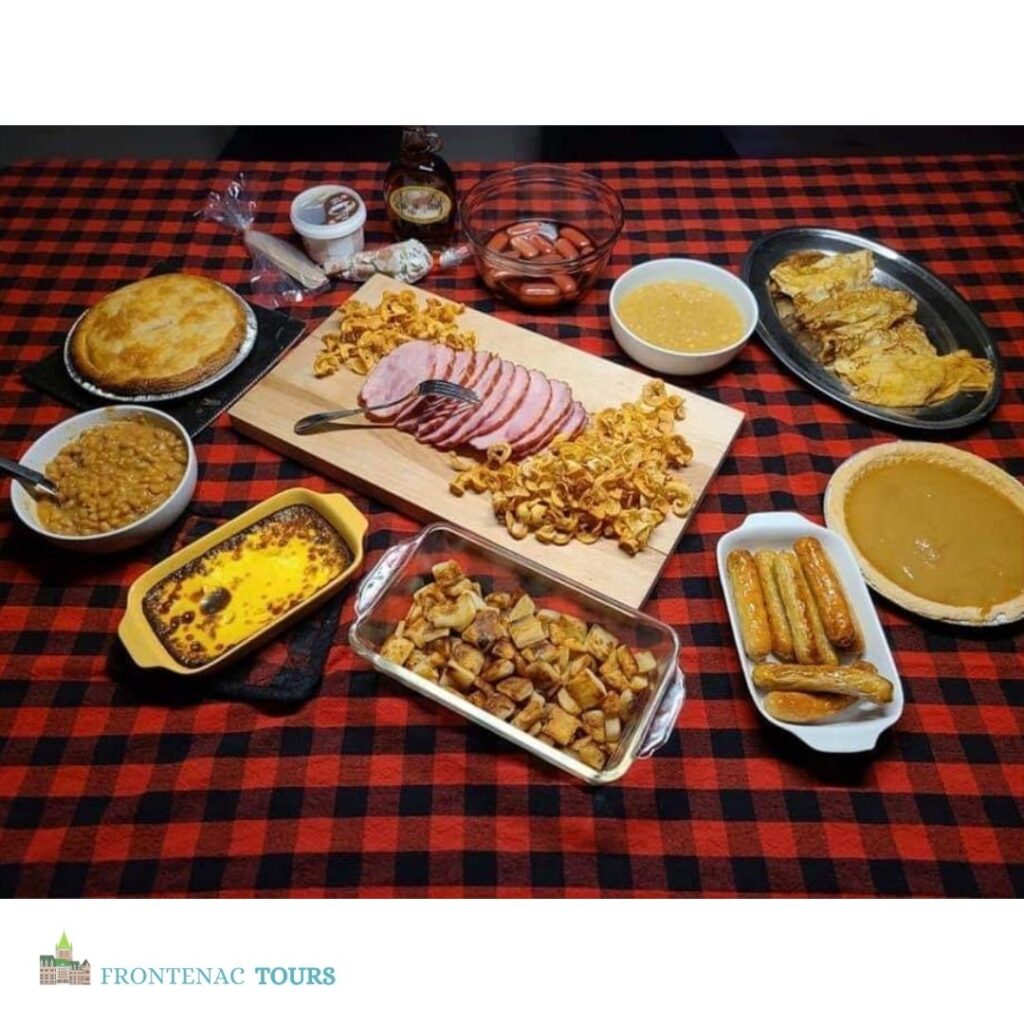
I forgot the best, the pinnacle of everything : maple taffy. Syrup boiled to perfection and poured over the fresh snow to make an incredible candy. By the way, if you come to see me in Quebec, I will take you for a tasting.
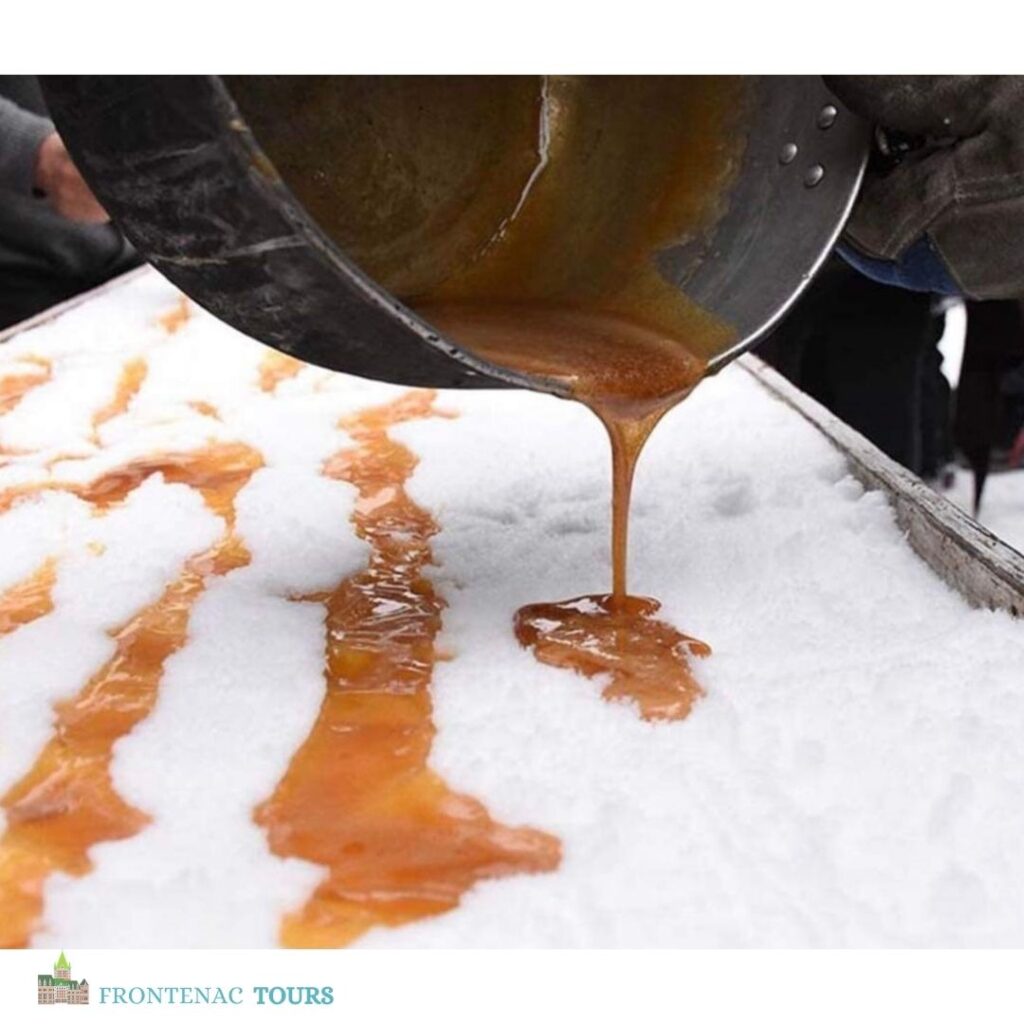
While sharing your meal, you can listen to Quebec folk music :
Look at Monika’s smile, when I invited her for her first Sugar Shack experience :

Pure happiness and my favourite time.
Unfortunately this year Covid is forcing the sugar shacks to be closed. But a brilliant idea was launched by maple syrup producers. ‘My sugar shack at home’ : you can order your ready-made meal in your favorite sugar shack. For my part, the Lac Beauport Sugar Shack was my choice and believe me once again I am not disappointed. Here is my 2021 sugar shack meal, a pure delight.
The history of the maple syrup
Long before the arrival of the French in America, the ritual of collecting maple water was well established. The Amerindians made a V-cut in the trunk of the tree with their Tomahawk, fixed a piece of wood there in order to slide the sap towards a birch bark container in order to collect this precious water, of which they had discovered its particular qualities. They boiled this water in clay vessels to make sugar.
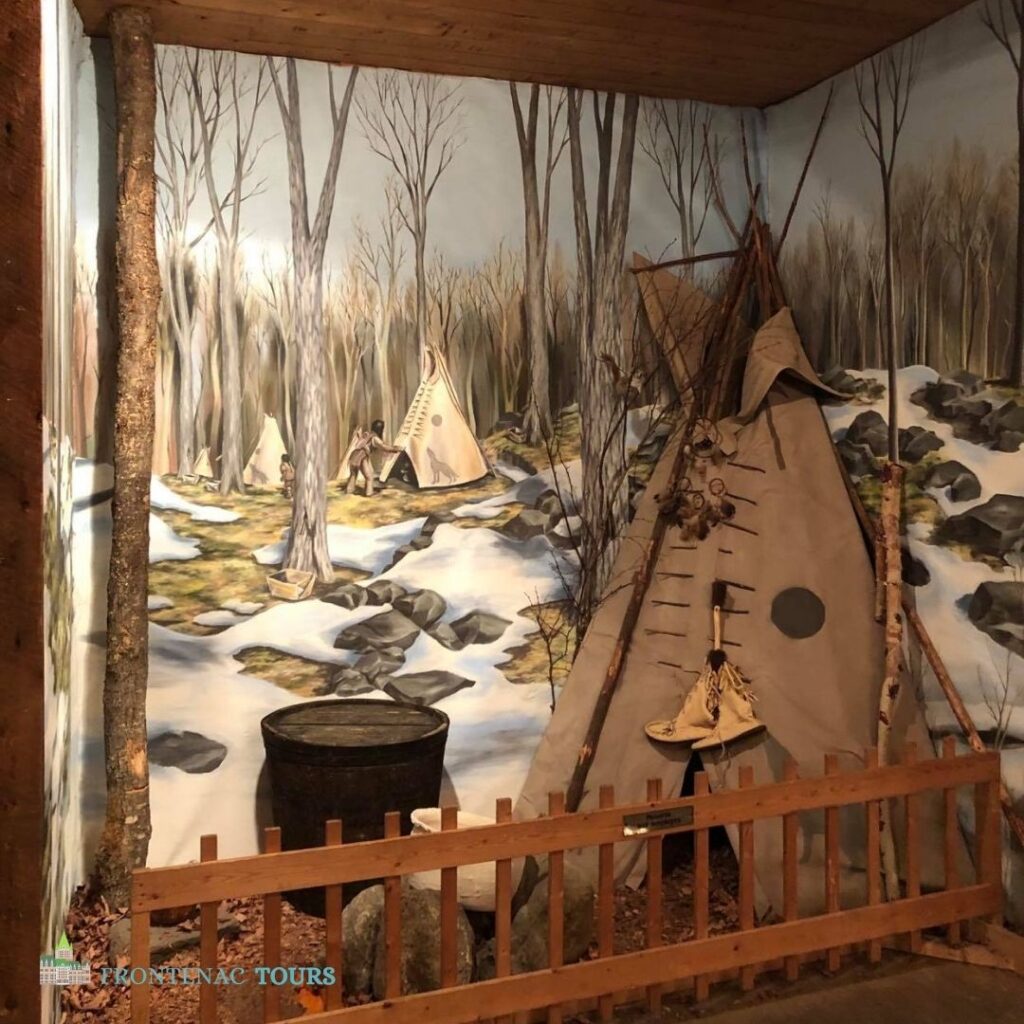
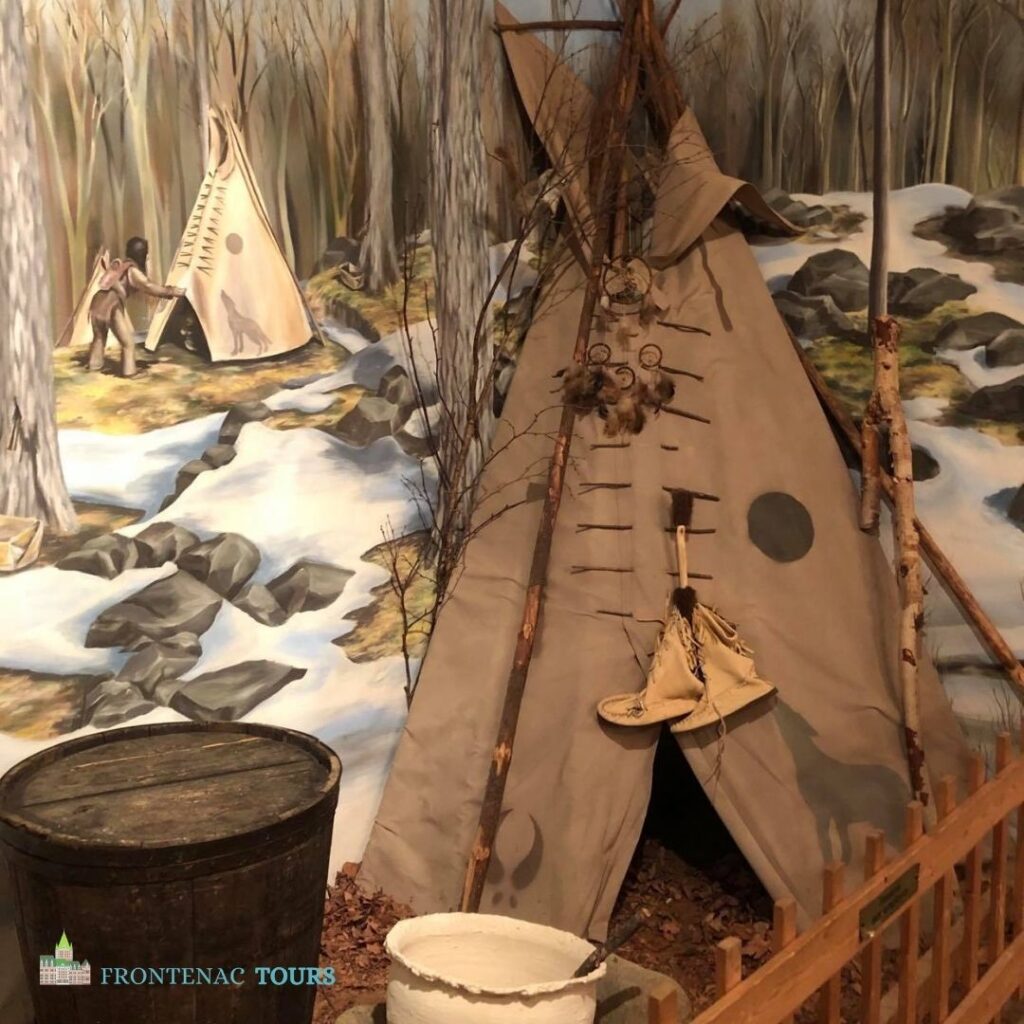
There are several legends that give us its origins, so you can choose your favorite :
The squirrel
One version says that a little squirrel climbed up a tree trunk and bit a branch … and began to drink. An Amerindian at the bottom of the tree was looking at him and wondering why, since a spring of fresh water was flowing nearby. He imitated the squirrel by slitting his knife … what a surprise ! Until then, his tribe found sugar only in wild fruits. And here is a tree weeping sugar in crystal tears. In addition, he had just discovered a cure for the scurvy that his family often suffered in the spring. All because he had watched and imitated a squirrel quenching its thirst with maple sap …
Marie-Victorin, a great naturalist and scholar from Quebec, illustrious author of La Flore laurentienne, bluntly affirms that the Amerindians learned from the red squirrel of the existence of maple syrup and taffy. In fact, when a branch of sugar maple breaks under the weight of the ice, the wound caused sinks in the spring. From this natural cut, the sap always follows the same path, sometimes even to the foot of the tree. Day after day, the hot spring sun evaporates the water and there is only a trail of maple taffy left that the red squirrels greedily lick.
Micmac
On an early spring day, while the wind was still chilly, an old Micmac woman went to collect the sap from the maple trees and, as it tastes better hot, she put some in a pot and placed it over her fire at the her teepee. As she was tired, she went to lie down a bit. When she woke up, it was already evening. In the pot, she found a golden syrup that was clear and sweet.
Algonquin
The chief took his tomahawk from the maple tree he had stuck it into the day before. As the sun rose in the sky, the sap began to flow. His wife tasted it and found it good. She used it to cook the meat, which saved her from going to the spring to bring back water. The sweet taste and the sweet smell were much appreciated by the chef. He called the syrup in which the meat had boiled ‘Sinzibuckwud’, an Algonquin word meaning “taken from the trees.”
Iroquois
On a freezing cold morning a long time ago, an Iroquois chief named Woksis came out of his hut. Since he had to go hunting, he removed his tomahawk from the maple tree he had planted it in the night before. The tomahawk had made a deep gash in the tree but Woksis ignored it. He left for hunting. A birch bark container was placed at the foot of the maple tree. Drop by drop, the sap that looked like water flowed out of the gash in the trunk of the maple tree and filled the container. The next day, Woksis’ wife noticed that the container was full. Thinking that the colorless sap was water, she used it to make a quarry stew. In the evening, at supper, Woksis smiled and said to his wife, “This stew is delicious. It tastes sweet.” Not understanding it, the woman dipped her finger in the stew that had simmered all afternoon. Woksis was right: the stew was sweet. We had just discovered maple syrup!
Legend of Nokomis (The Earth)
Nokomis, grandmother of Manabush and heroes of many Indian legends, is said to have been the first to drill holes in the trunk of maple trees and collect the sap. Manabush, noticing that the sap is a ready-to-eat syrup, said to his grandmother, Nokomis : “Grandma, it is not good that trees produce sugar so easily. If people can collect sugar so effortlessly, it will not take long for them to become lazy. We must try to make them work. Before they could taste this exquisite syrup, it would be good if the people were forced to chop woods, and spend nights watching how the syrup cooks.” Fearing that Nokomis would not listen to him, Manabush climbed to the top of a maple tree with a vessel filled with water and poured the contents inside the tree. The sugar dissolved and we had to work hard now to obtain syrup.
The god Nanabozho
A long time ago, pure syrup, like the one with which you sprinkle your pancakes, flowed from maple trees. When the god Nanabozho tasted it, he found it so good that he thought that the inhabitants of the Earth would not appreciate this syrup if they could get it so easily. Nanabozho therefore added water to the thick syrup provided by the tree, so much water that the liquid ended up tasting like sugary water. He then hid this sap deep in the tree. Since then, people have to work hard to obtain maple syrup.
Thank you for Raoul Carrier from the Érablière du Lac Beauport who originally wrote about these legends.
In the 17-18th century
The tradition of collecting will be passed on to French colonists upon their arrival in the 17th century. But it was only at the beginning of the 18th century that they really took an interest in it, and as a result they began to develop techniques in order to modernize everything, and this continues until nowadays. In the 1700s, French settlers really began to take an interest in maple sap and maples by making an ax slash, and the use of a ”spout” to drain the sap towards a container resembling a trough placed at the foot of the tree in the snow. The water collection will be very rudimentary. Indeed the people will take water in barrels bound with a yoke and they had snowshoes on, because the snow in spring is very soft and it is easy to get bogged down. In popular culture it is said to ‘run the maple trees’.
Sugaring-off will be a family affair right now because everyone must participate. The children will collect the wood to feed the fire, the women will watch over the fire, so that the sap becomes syrup or sugar depending on the use. A delicate task because their supervision and their know-how define the quality of the product.
A makeshift shelter will be installed, wooden panels with an angled roof and a tripod and cast iron maple water bucket to boil the sap.
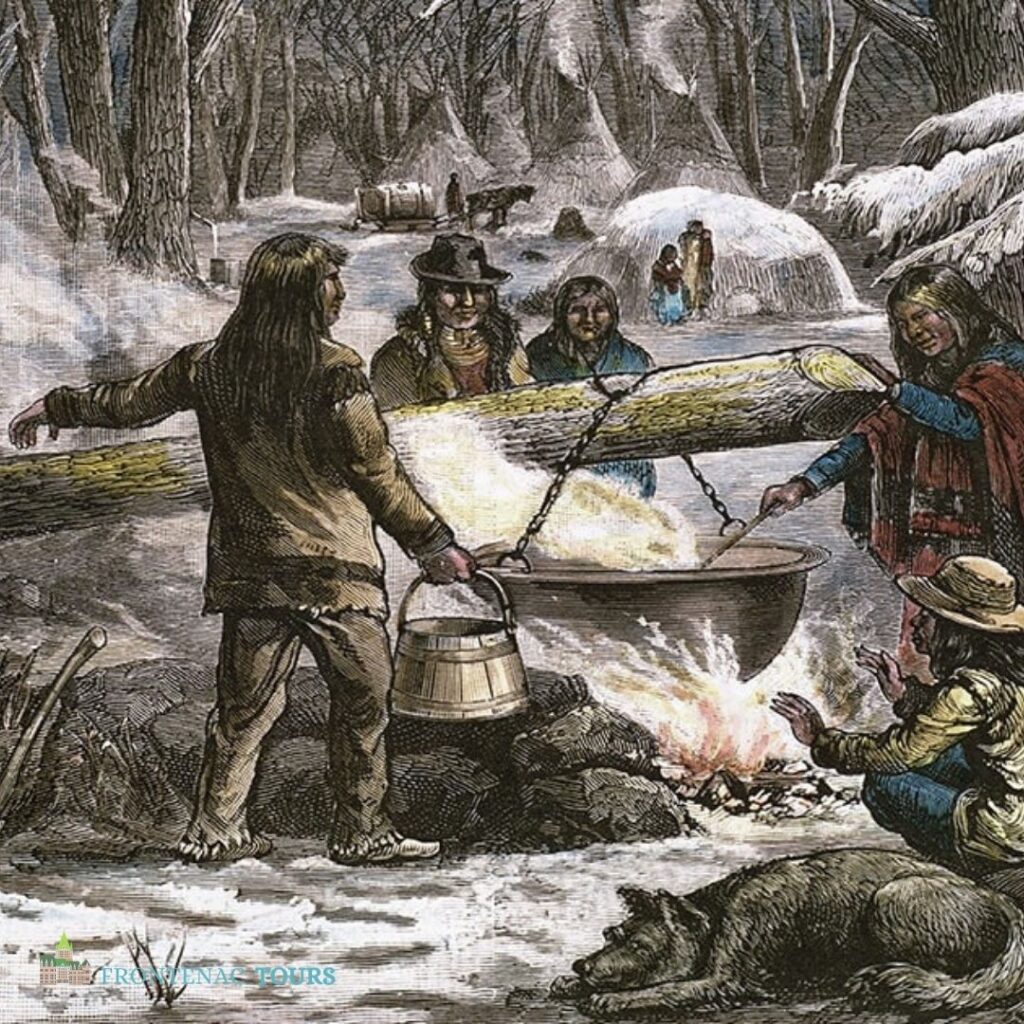
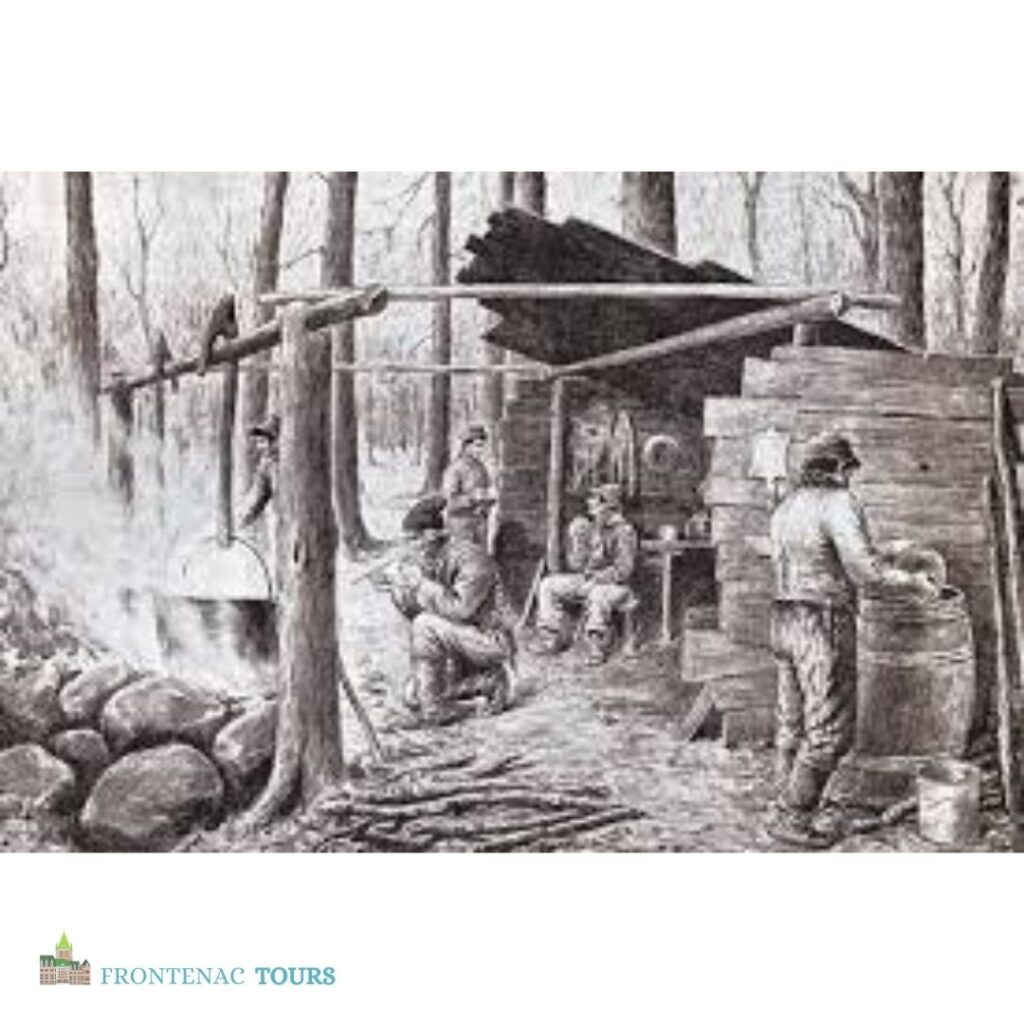
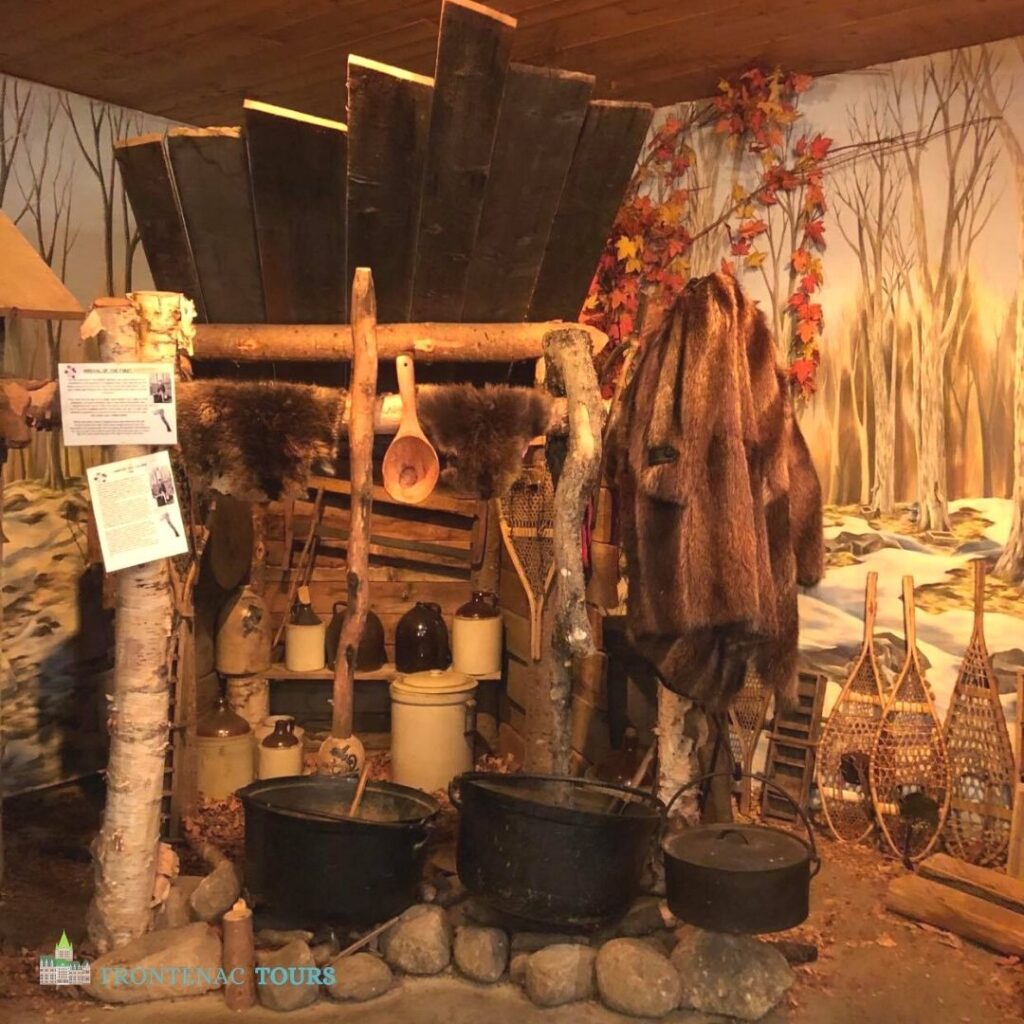
In the 19th century
From spring to spring the valiant colonists will perfect the art of sugaring-off.
In the mid-1800s, great innovations will begin, the spout will be replaced by tin spout, which will be driven directly into the tree with a hammer. And at that time the maple water buckets will also be attached to the spouts. In addition, the shelter will be transformed and it becomes an integral part of the house. This room will be called the maple grove and will be used mainly in the spring. Also the way for boiling the sap will be improved, the cast iron cauldron will be replaced by what will become the ancestor of syrup kettles.
Indeed, we will build a stone base, like a stone fireplace base, to sit on a large metal pan, we will reduce heat loss and be more efficient at boiling the sap. For the transport of maple sap to the maple grove, the improvement of the sled to which a barrel will be installed in order to transfer the boilers to the place of harvesting. Often oxen or horses were used to pull the precious harvest to the maple grove. This is the beginning of the maple syrup trade.
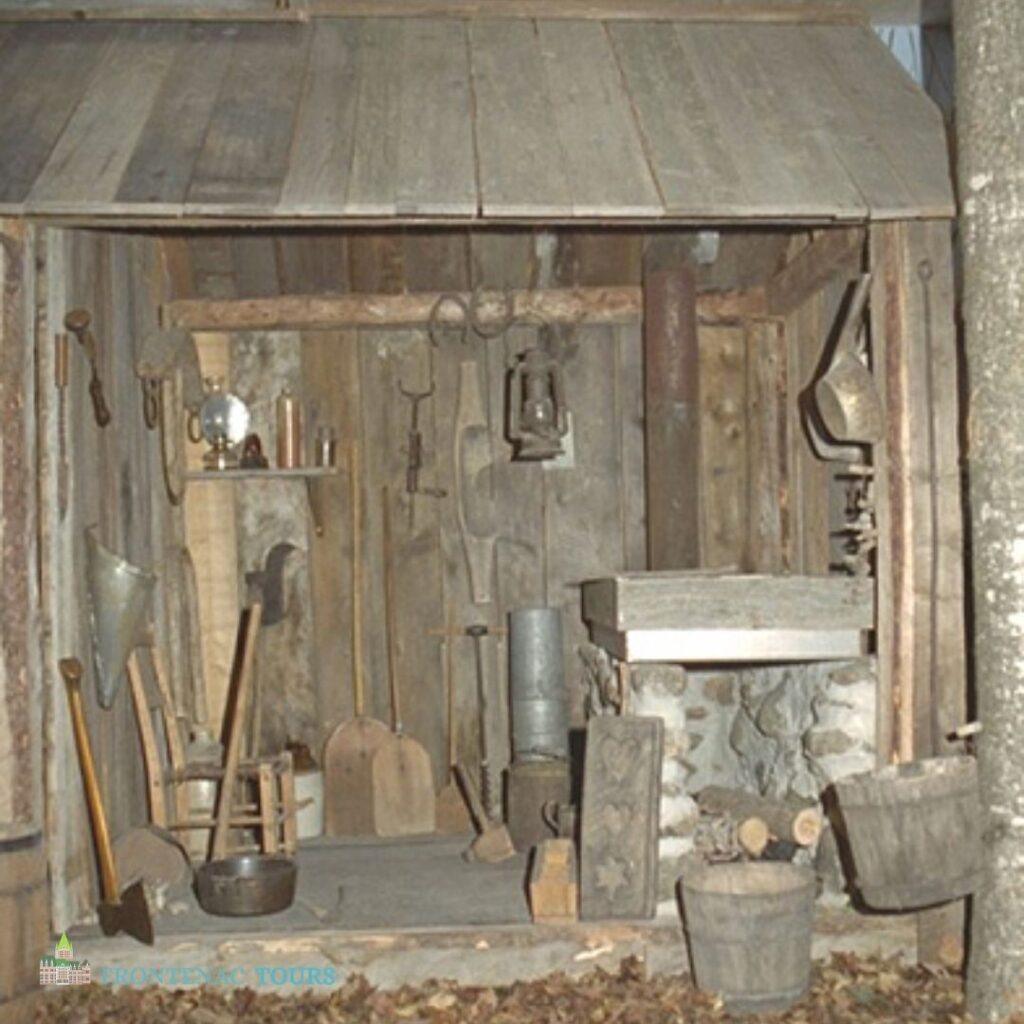
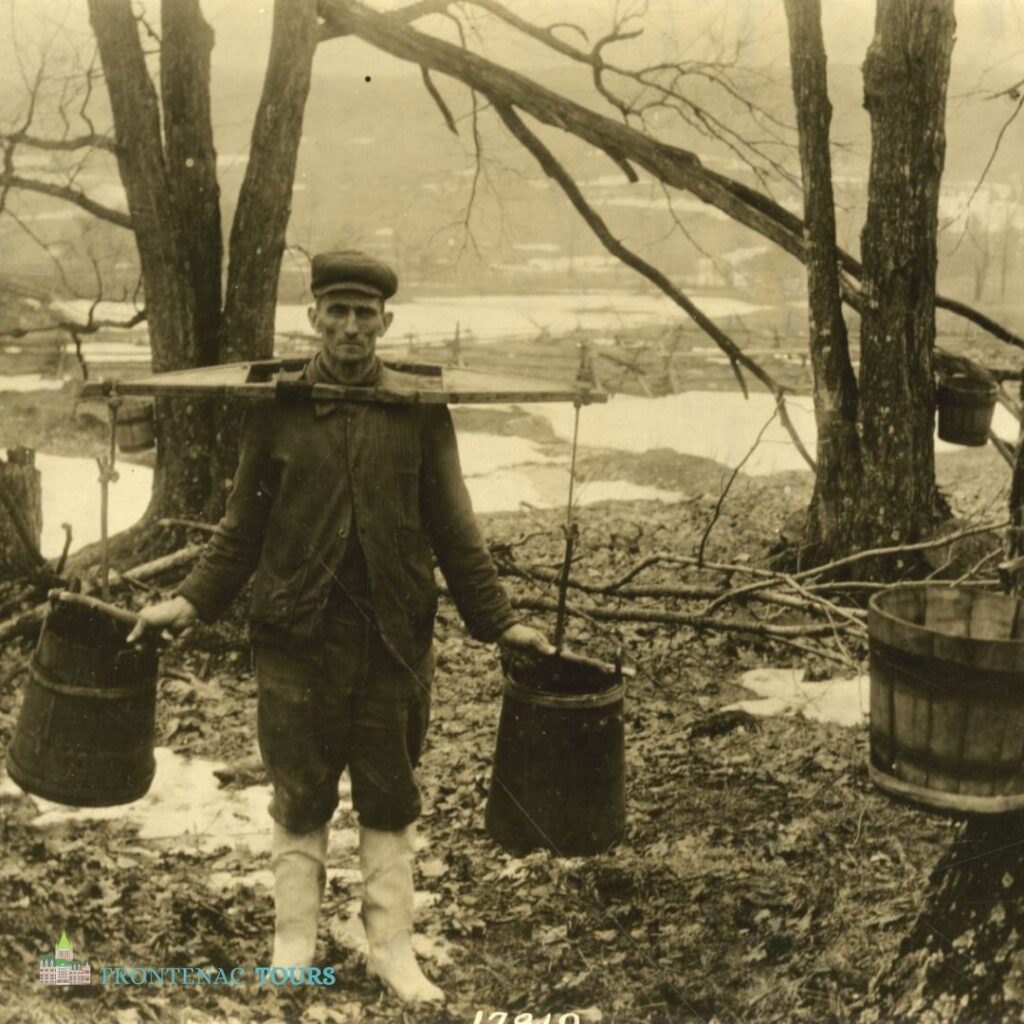

In the 20th century
The 1900s will also bring their changes in the maple grove. The demand for maple products is growing, and techniques for collecting maple water will change. The maple syrup producers use a crankshaft to insert the torch, which is much less damaging to maple trees. In addition, cast iron wood stoves will be used to boil water. The boilers for recovering water will be made of aluminum (reduction of lead residues). It was also in the 1925s that the preservation of the syrup was put into canning.
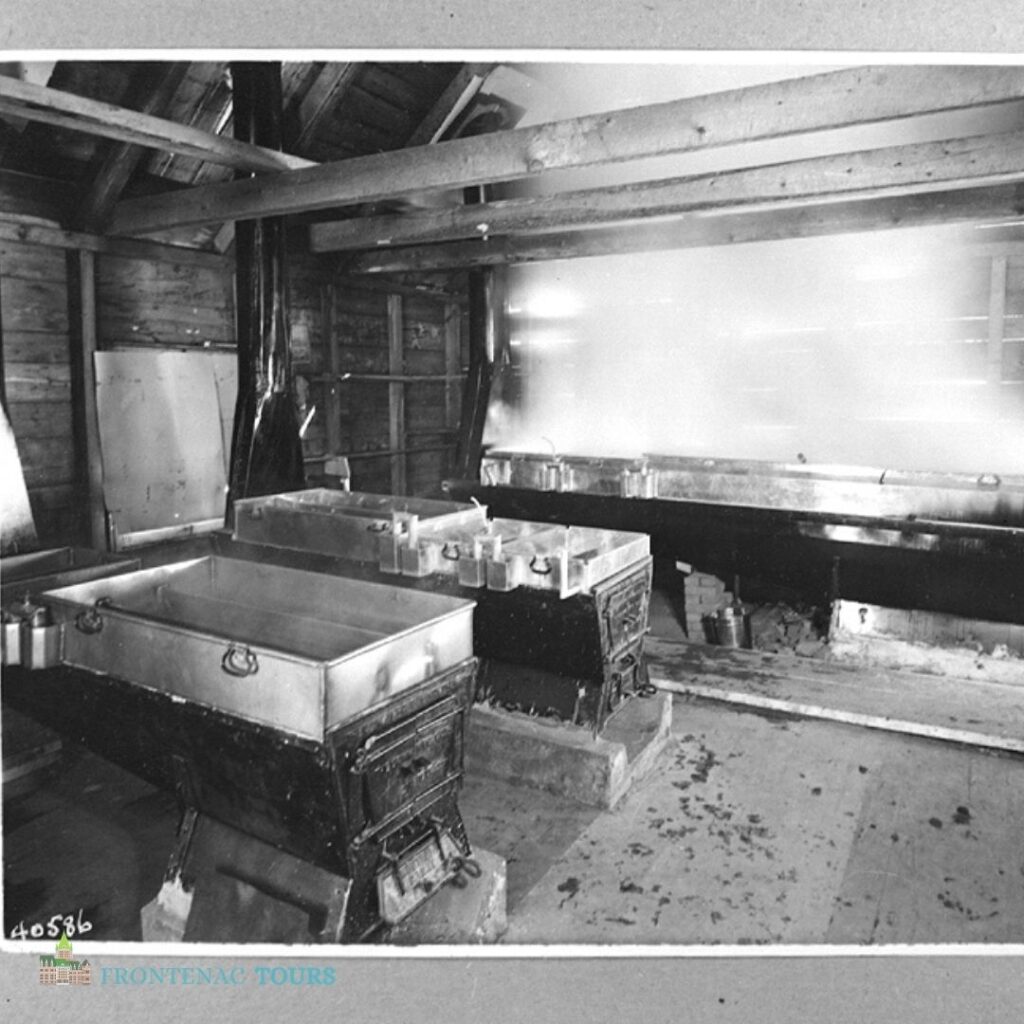

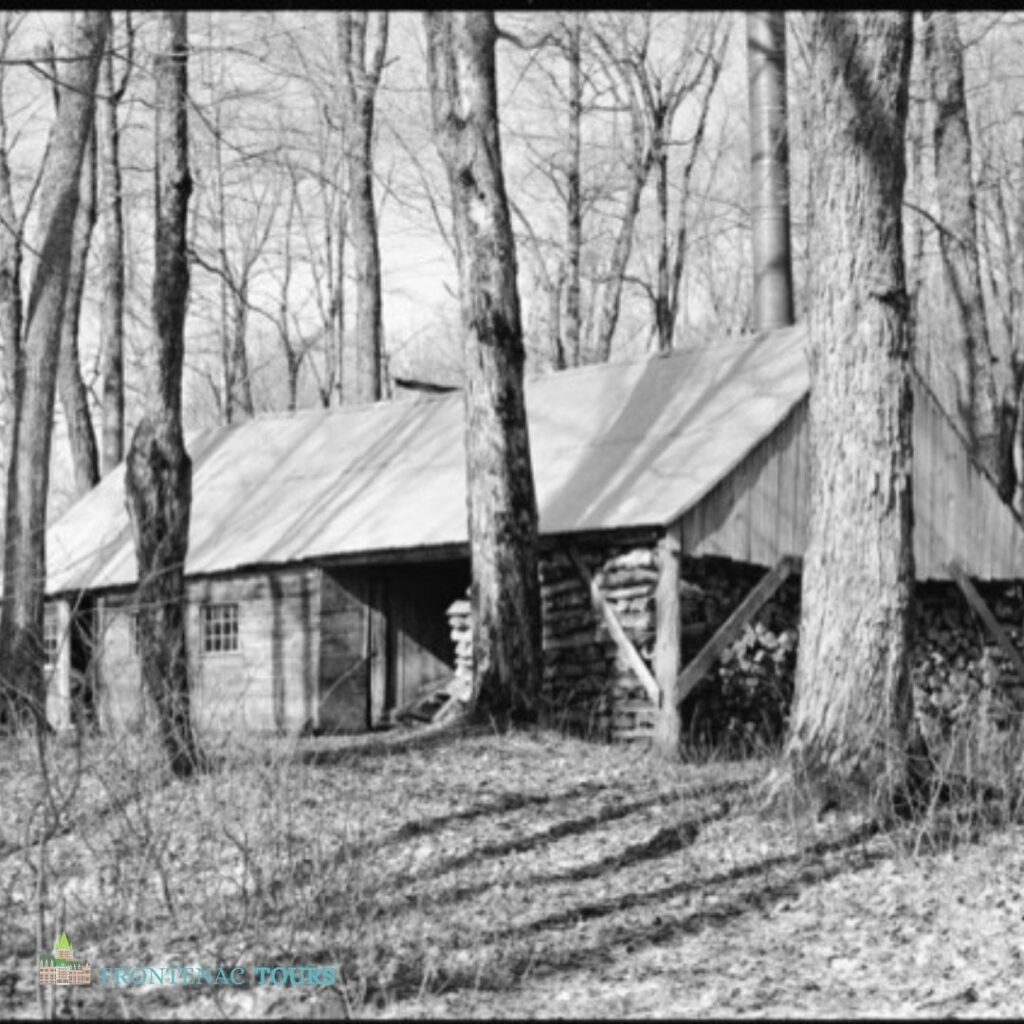
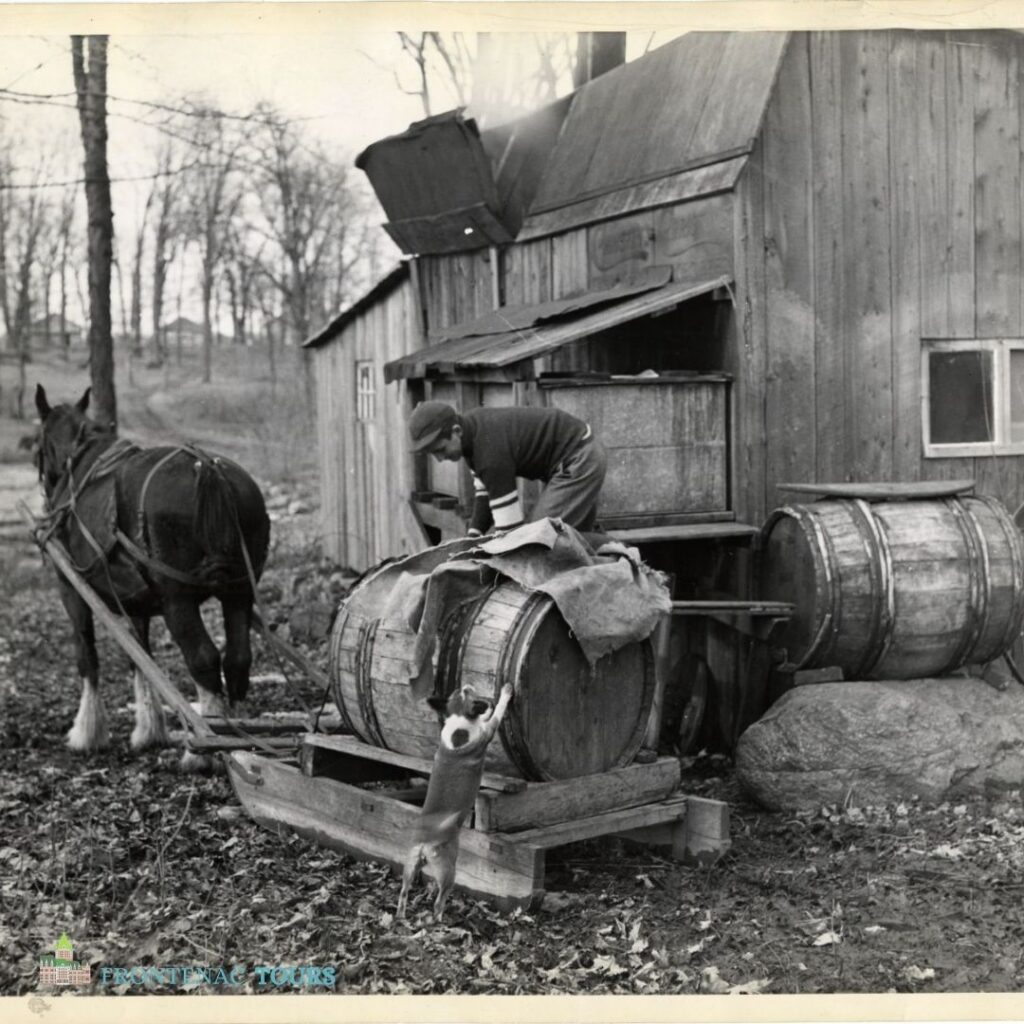
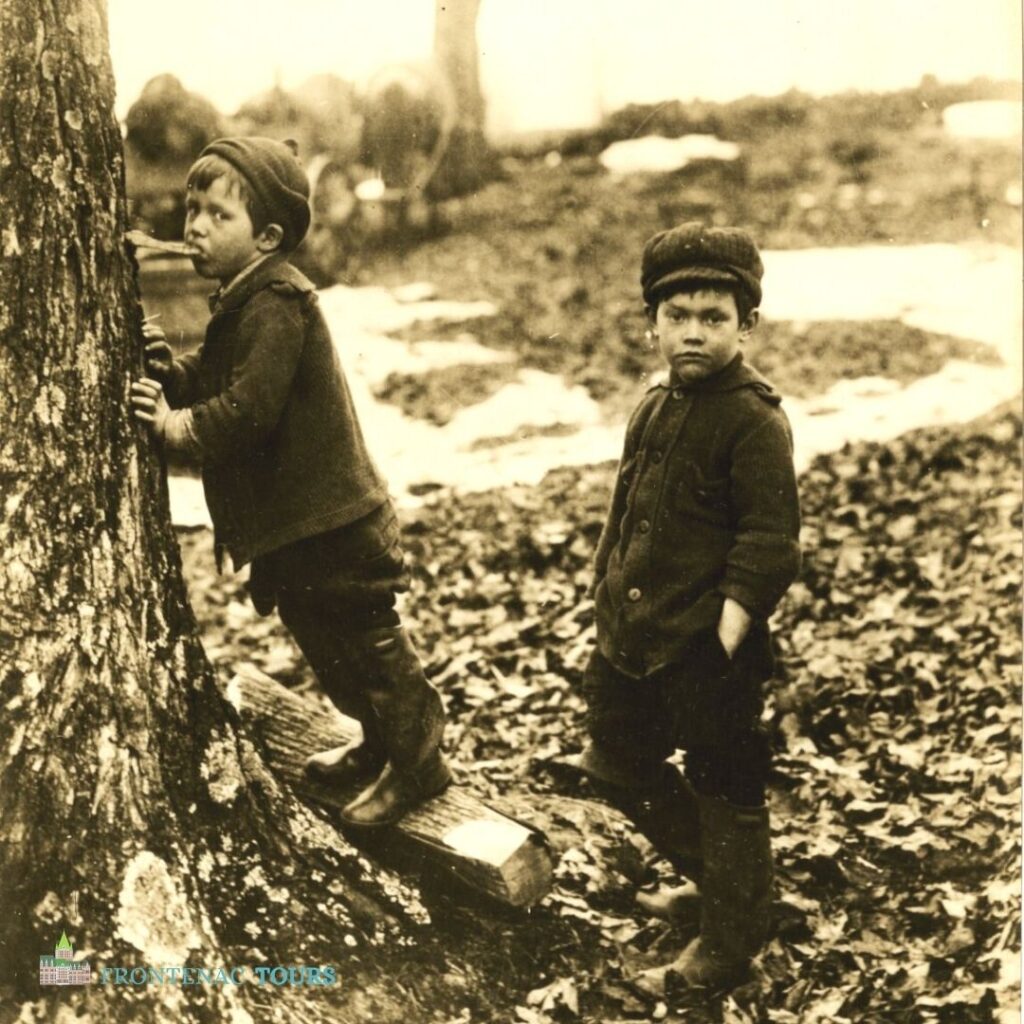
Sugar time until recently is also 24 hours of work. The stove had to be heated. Maple water is precious so as not to lose its properties and the sugar, it must be boiled as quickly as possible. For your information It takes 40 cords of wood and more per year in order to make the sugars.
Sugaring-off is hard work. From the start, everything is done by hand, with a man’s arm. Imagine people running through maple trees one by one with snowshoes on their feet, emptying buckets of maple water into maple water buckets and then transporting them to the large barrel pulled by a horse. With the collection of the day finished, the work at the kettle begins : keep the fire going day and night to get the best syrup possible.
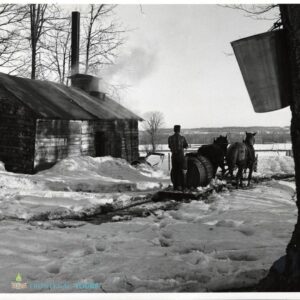
The 70s are coming and a new technique will be used by maple syrup producers to collect maple water and tubulures. This concept is to connect the maples by small flexible pipe to the boiling tanks. The sap transport will be activated either by means of a pump which will create a vacuum in the pipes or by unevenness. If you are in mountainous terrain that will make your work easier. Wood stoves will also be replaced by more efficient devices, osmosis units. The reverse osmosis technique will be used more and more. Basically this technique filters the maple water so that it is more concentrated. In fact, the water before filtration contains 2 to 3% of sugar, at the exit it will contain 8% of sugar and mineral elements. Once the process is done, the syrup will have better quality. In addition to the benefits of this method, maple syrup producers save a lot of time on production. Including no sleepless night to monitor the fire, and also good for ecology: we have reduced to 2 two thirds the consumption of wood.
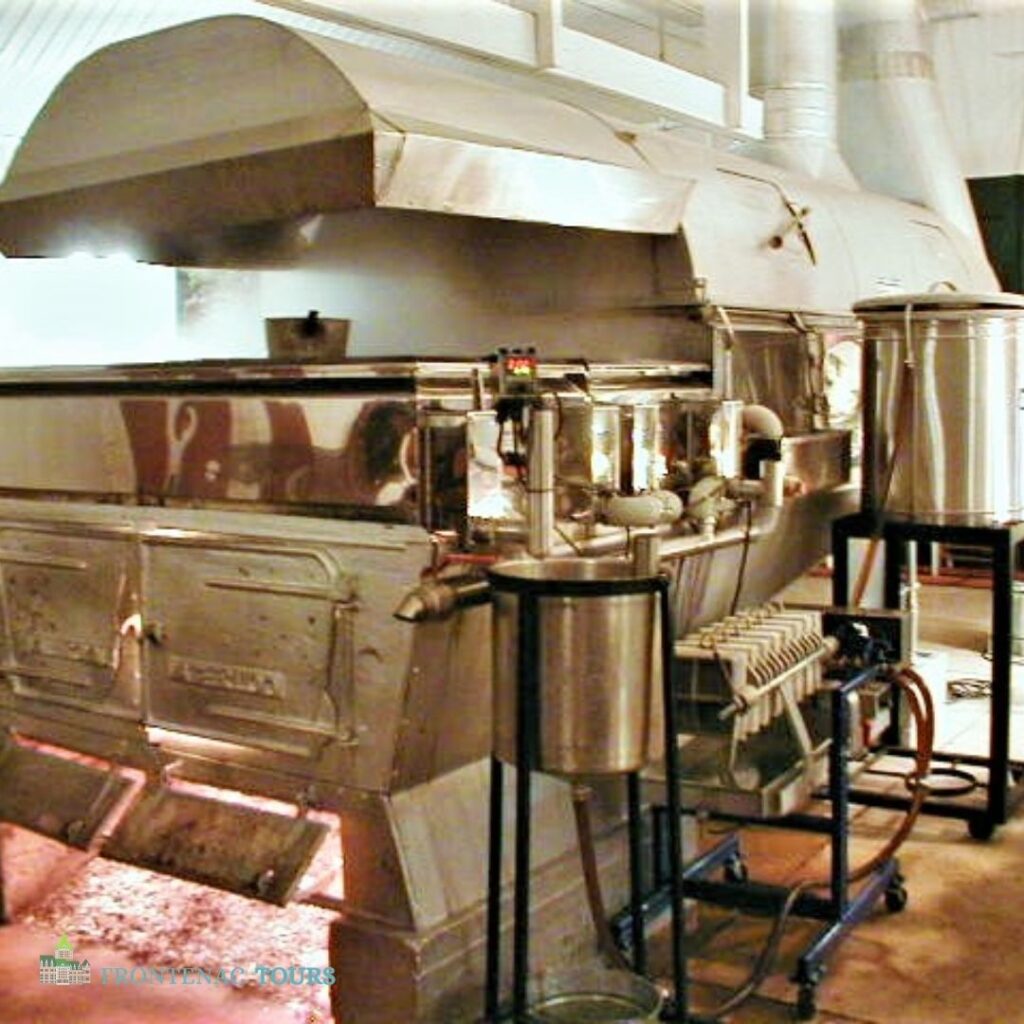
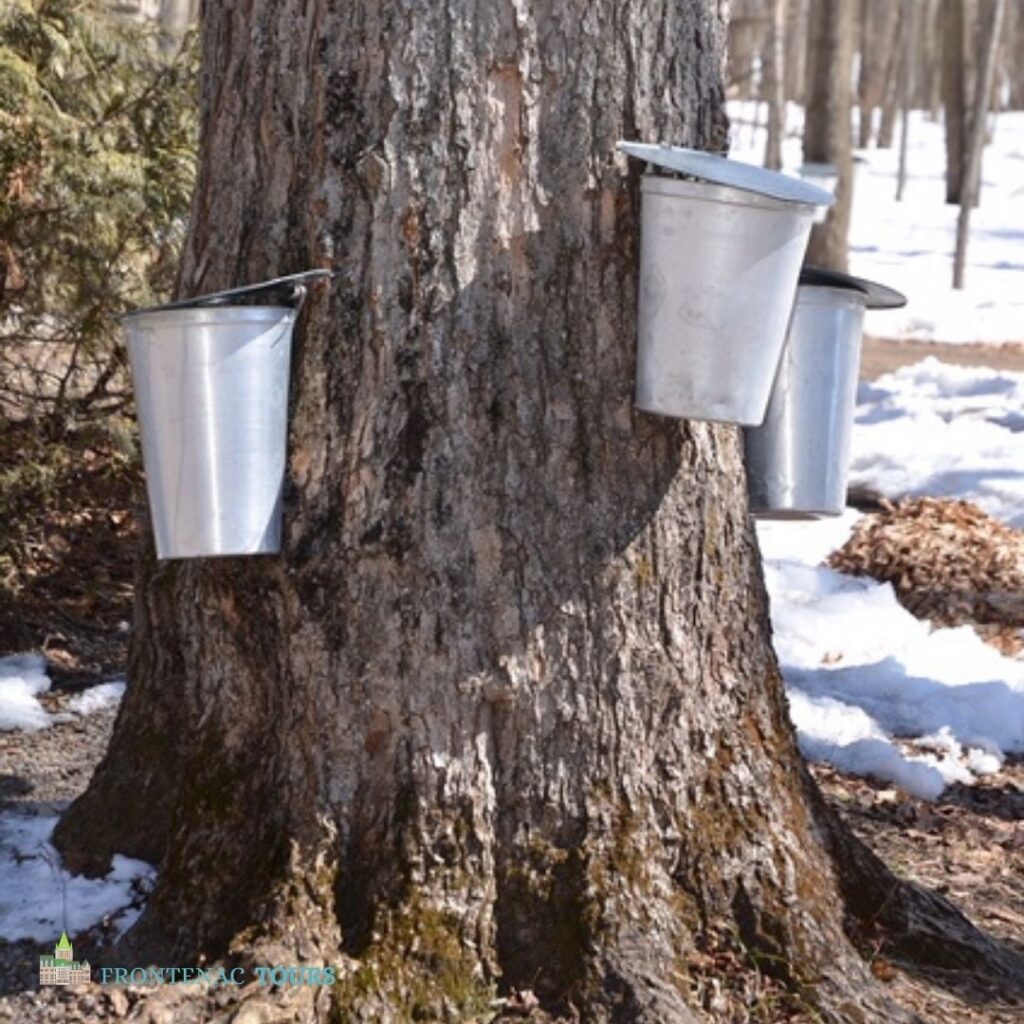
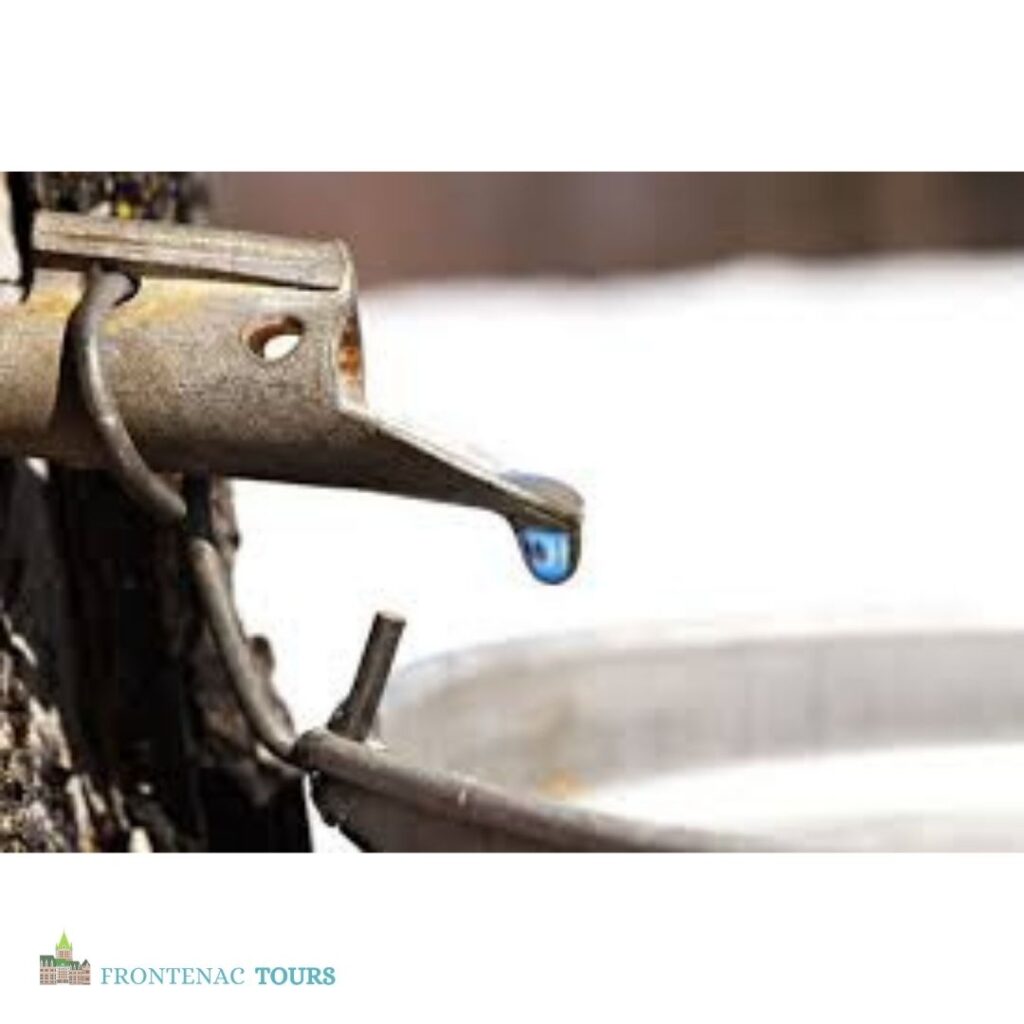
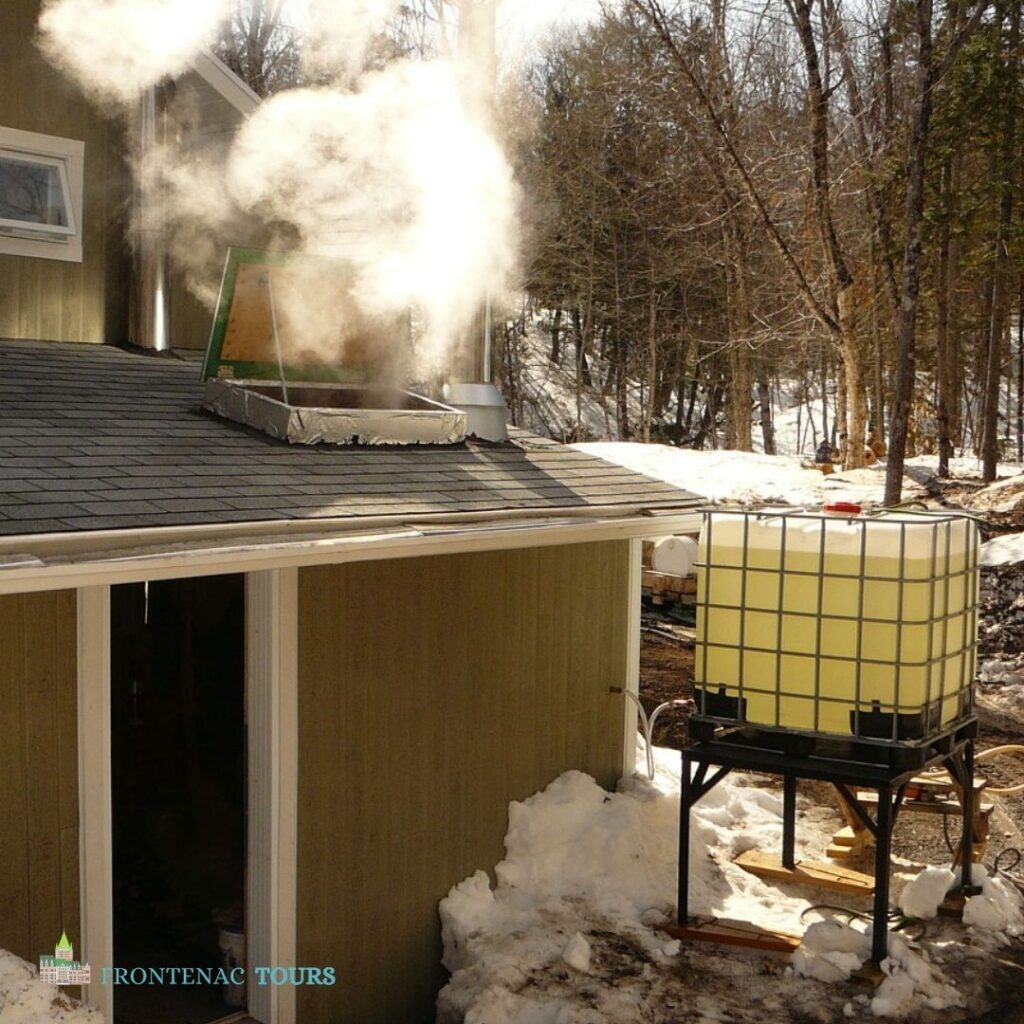
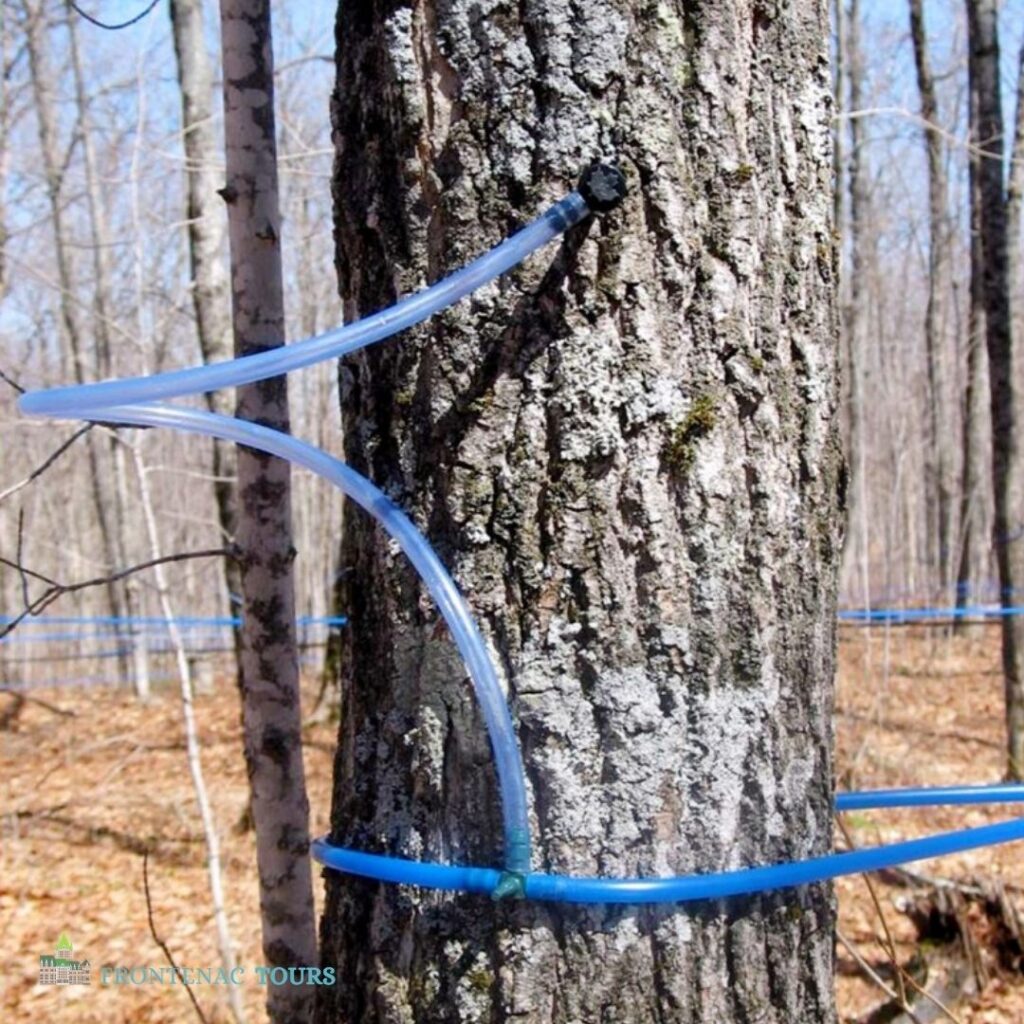
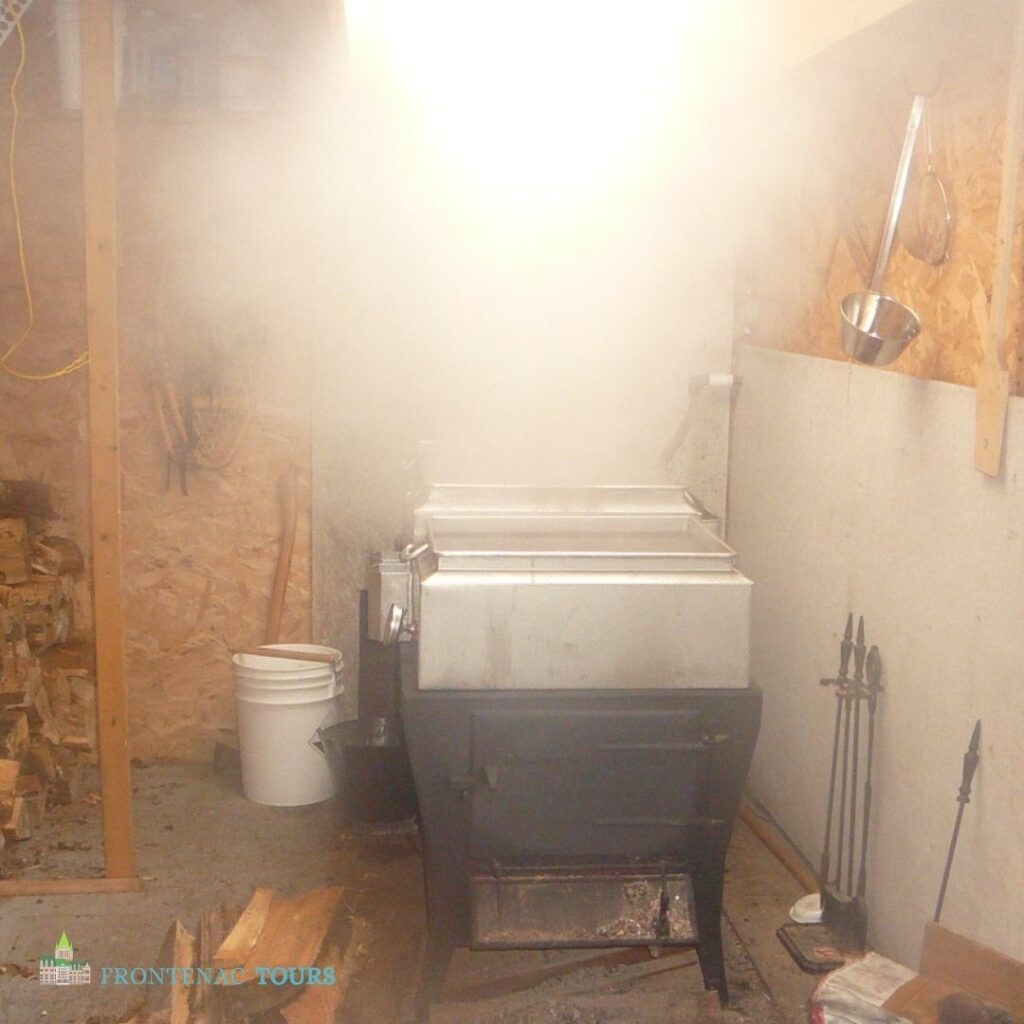
Maple syrup of Quebec
Did you know that
- To make syrup, you need 40 liters of maple water and it will give you only 1 liter of syrup
- Quebec maple syrup is 100% pure, so no additions, colors, artificial flavors or preservatives.
- Maple syrup contains polyphenols and many nutritious foods.

Did you know that Quebec maple syrup contains antioxidants, and a polyphenol called Quebecol, which comes from the boiled sap and that is the unique element in the production of maple syrup?
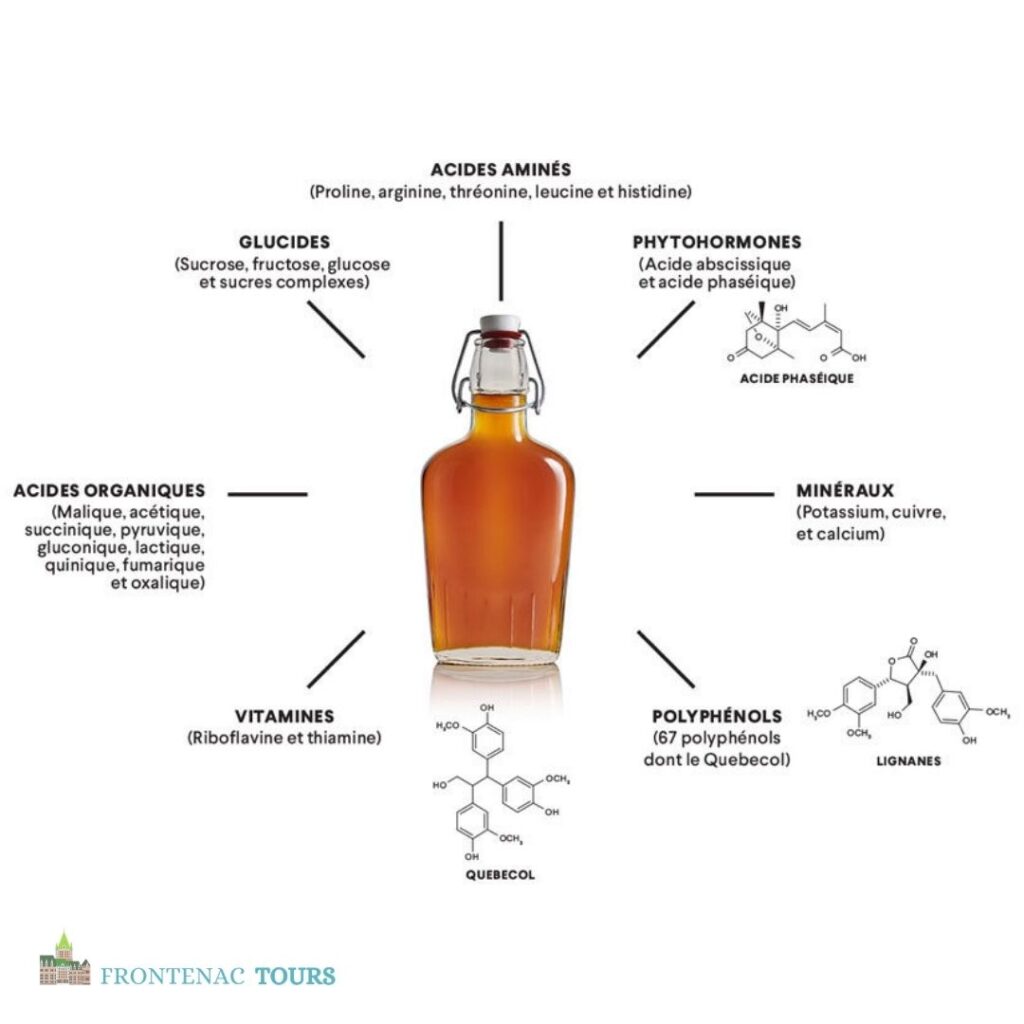
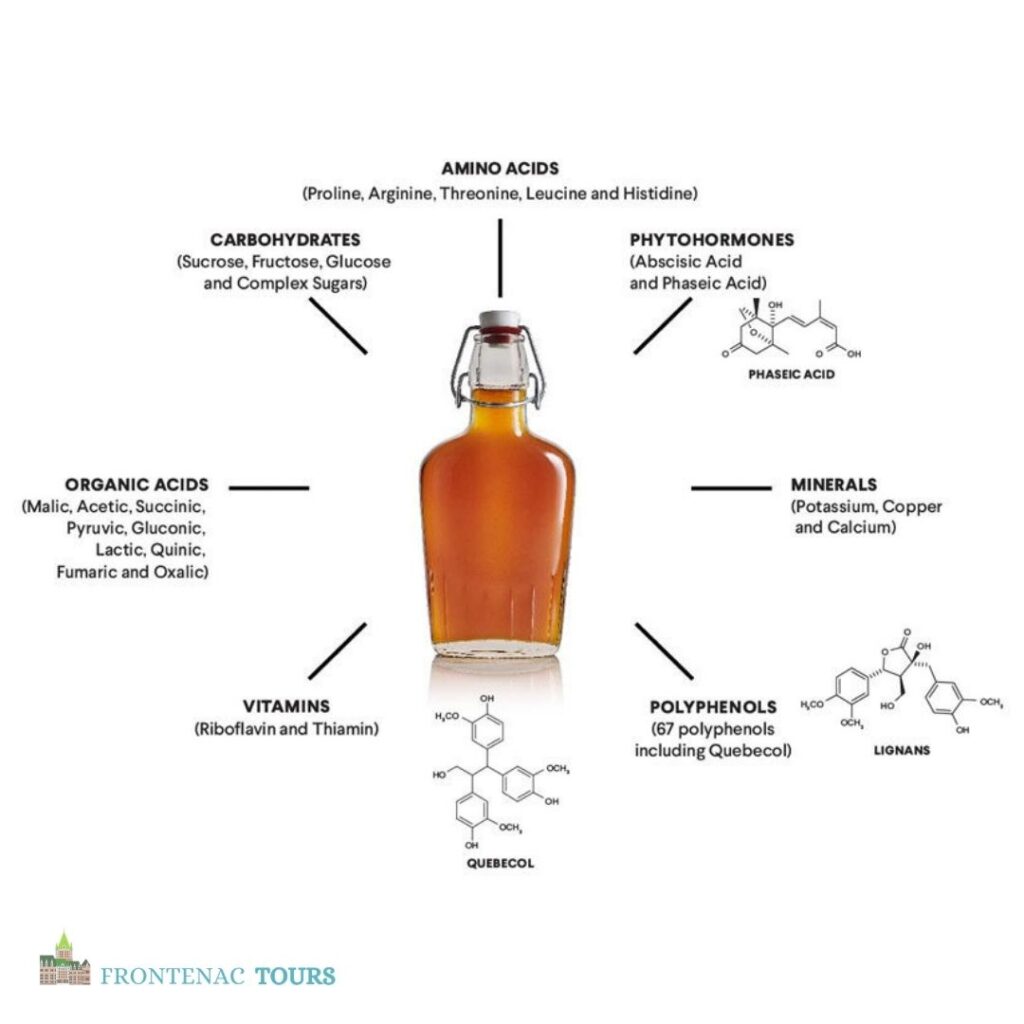
Did you know that
- 80% of the Canadian production of maple syrup comes from Quebec, and that Canada represents 71% of the international market.
- Canadian producers export over 45 million kilograms of maple products
- There are over a hundred species of maple trees and only 3 of them are used.
- There are 5 classification for maple syrup.
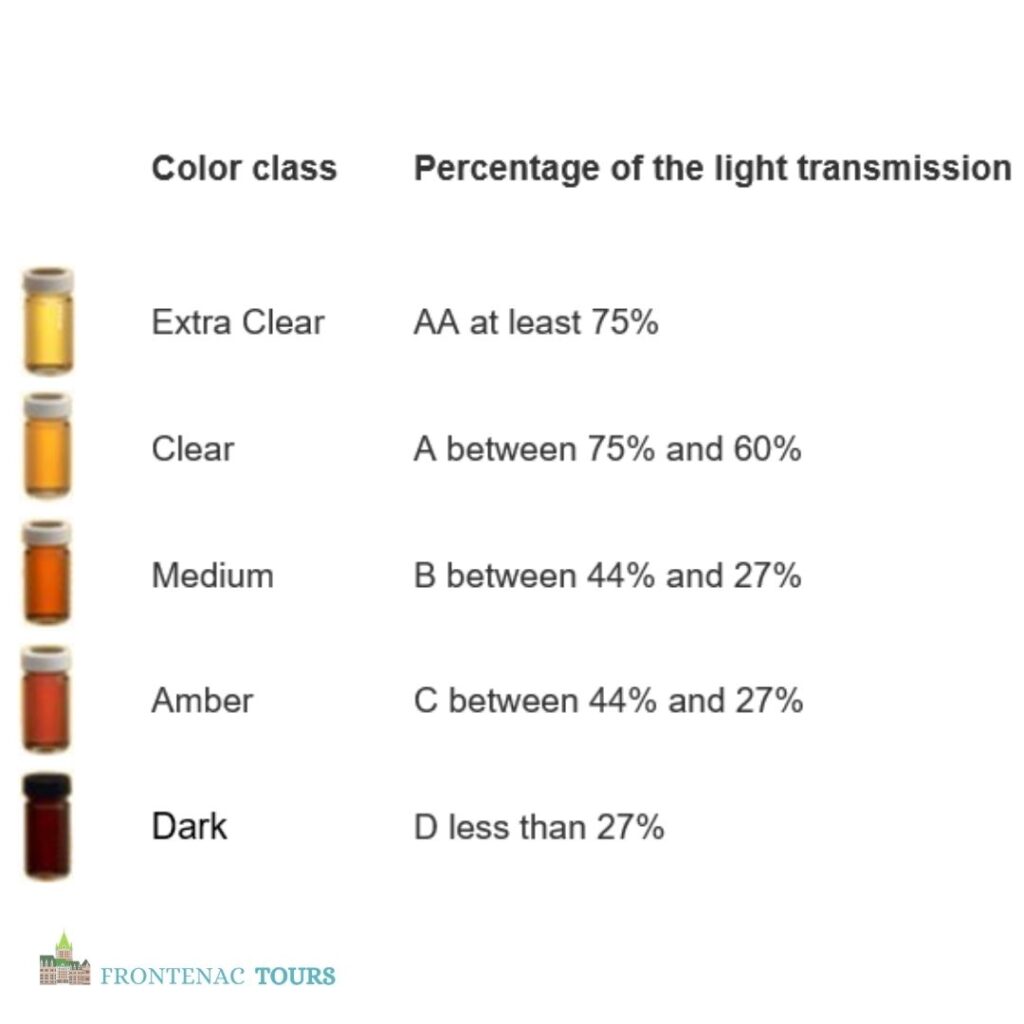
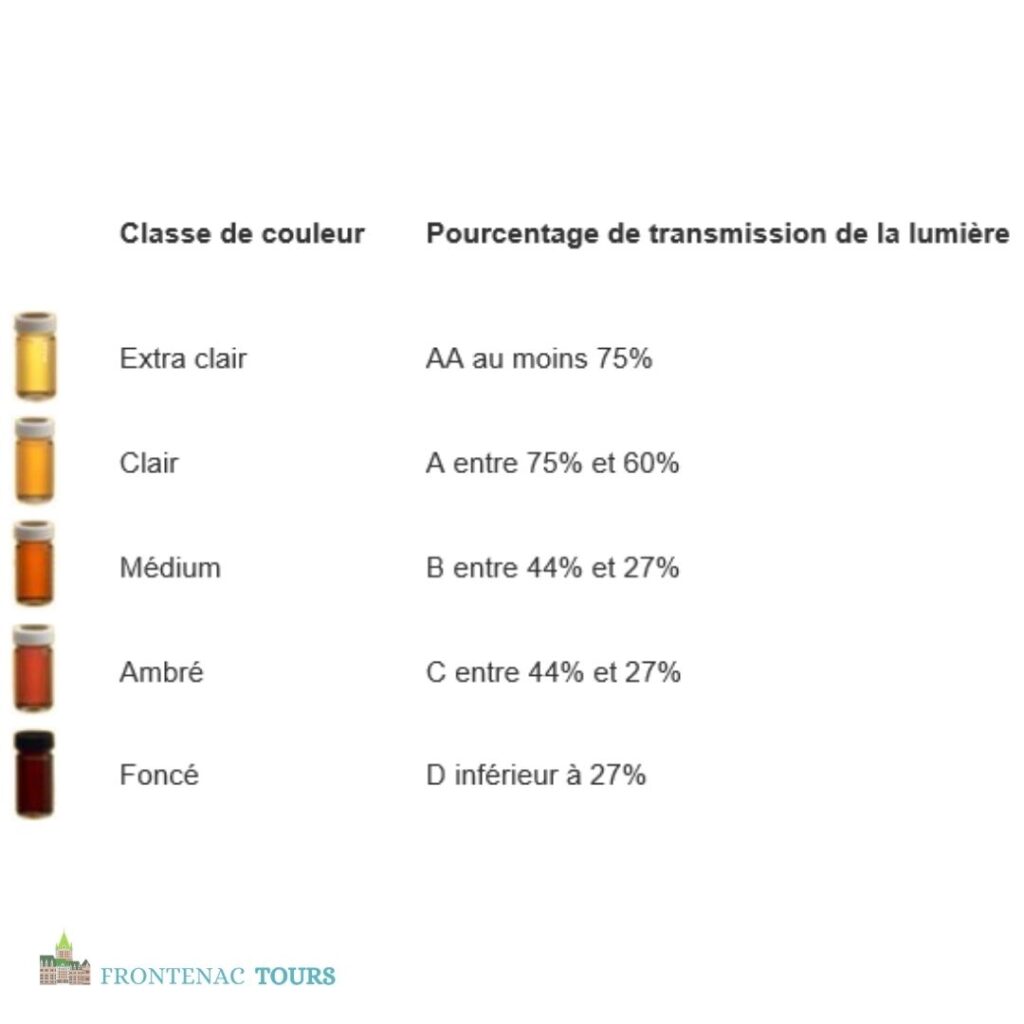

Did you know that the darker it is, the higher its concentration in essence and sugar?
All grades of maple syrup have a density of at least 66% sugar.
All classified syrups (Quebec or Canada) are pure and authentic. The forged and bad tasting syrups do not meet the quality standards and cannot be marketed.
Maple products
Maple water, which in my opinion is an excellent new product that you can find in grocery stores for several years now.
The pleasure of going to sugar is tasting the maple water itself.
I have a confession to make : maple products are a big part of my life, I love them!
The syrup, I prefer the light color, I put it all over my pancakes, waffles, on a toasted baguette, and even in my coffee. But the perfect breakfast surely includes a slice of bread with maple butter on it. I remember that my sweetest childhood memories were when my father grated sugar loaf on my toast for breakfast. It is also nicknamed the country’s sugar.
I discovered maple water a few years ago. As you know, I often go outside for activities, and the energy drinks are not really part of my diet. So I discovered that I could replace it with maple water, a pure beverage with no added agents or ingredients. Just passing the maple water by itself contains 46 nutrient compounds, only 9 grams of carbohydrate, and per 375 ml only 35 calories … I think I made a good choice.
Here are my favorite products :
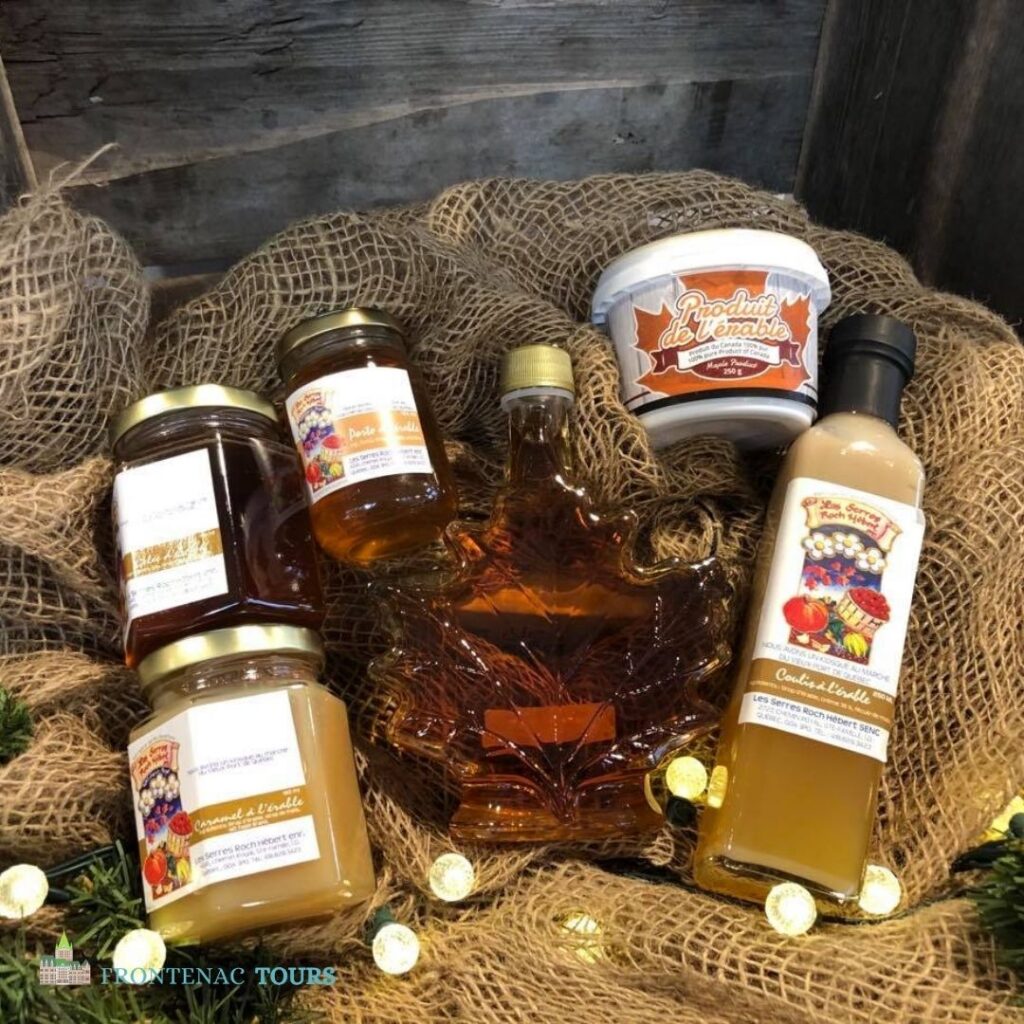
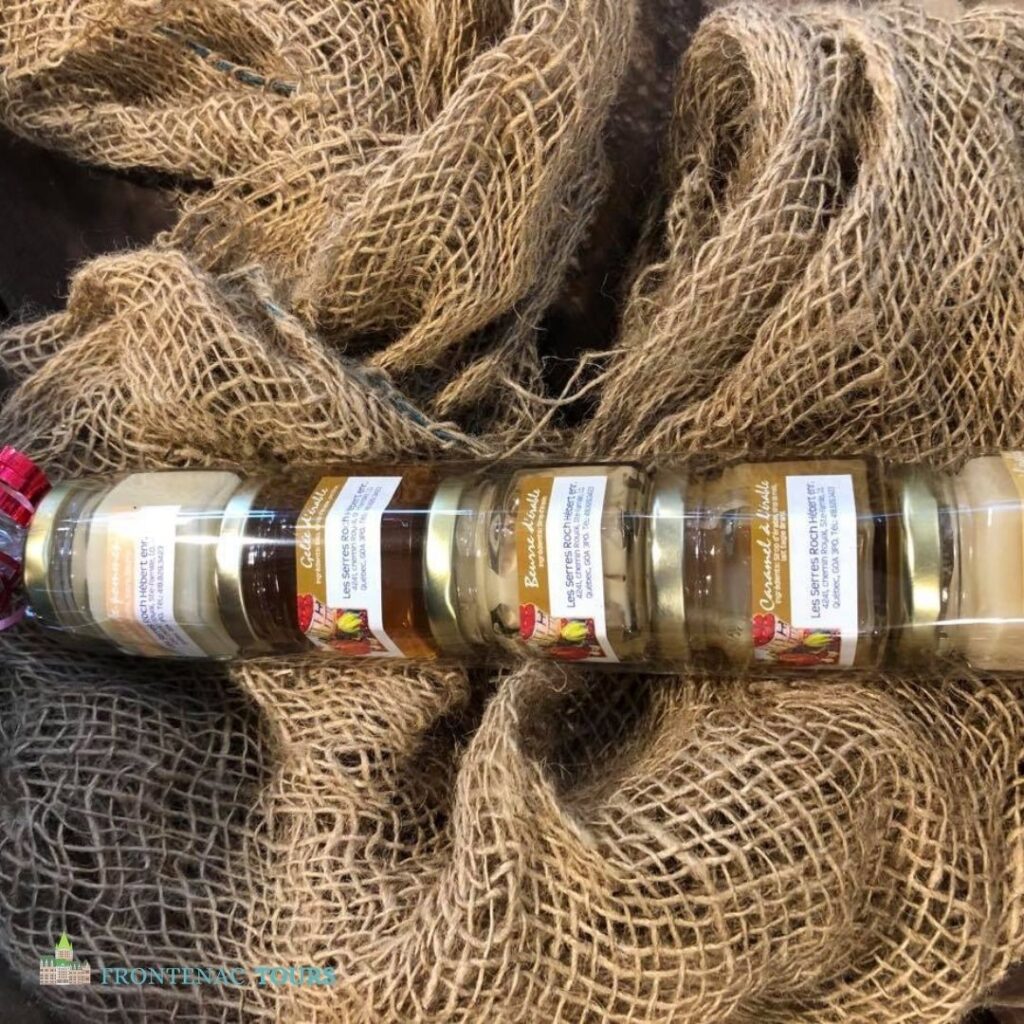
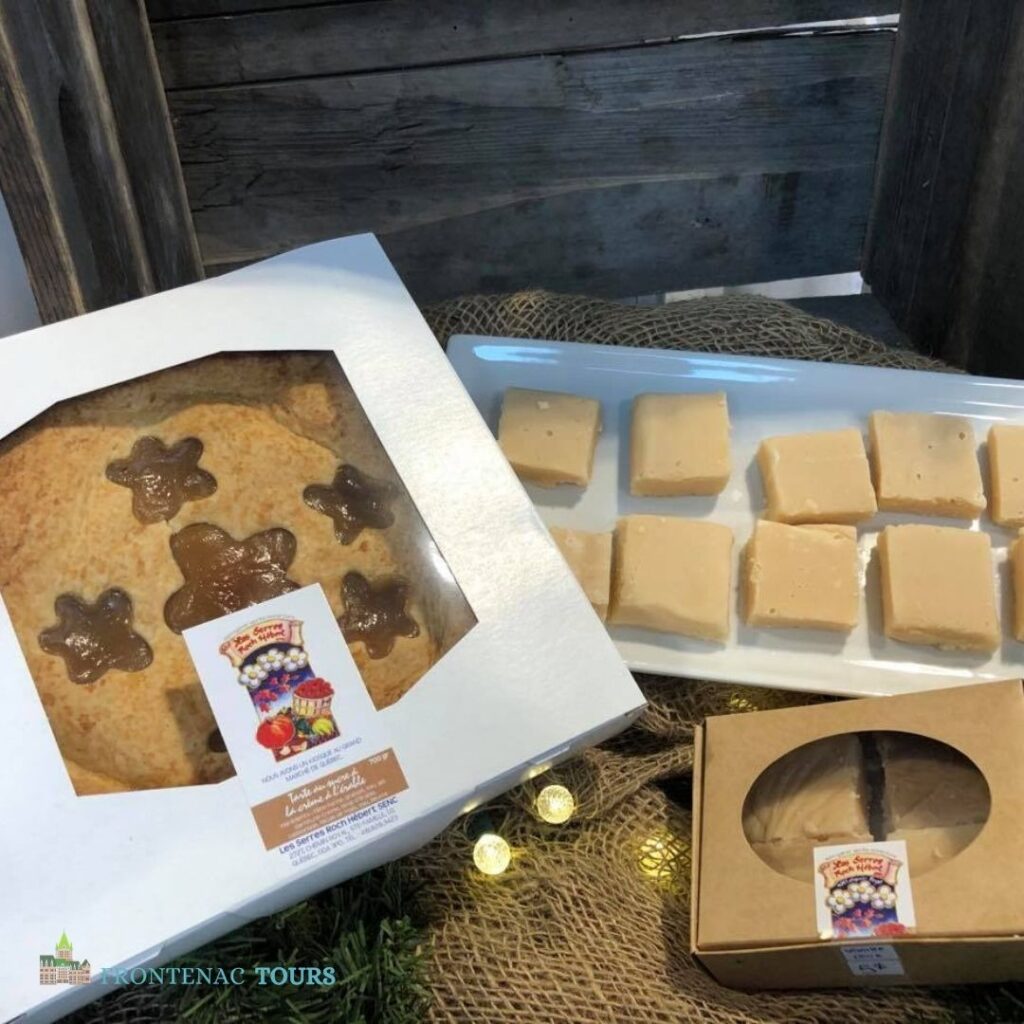
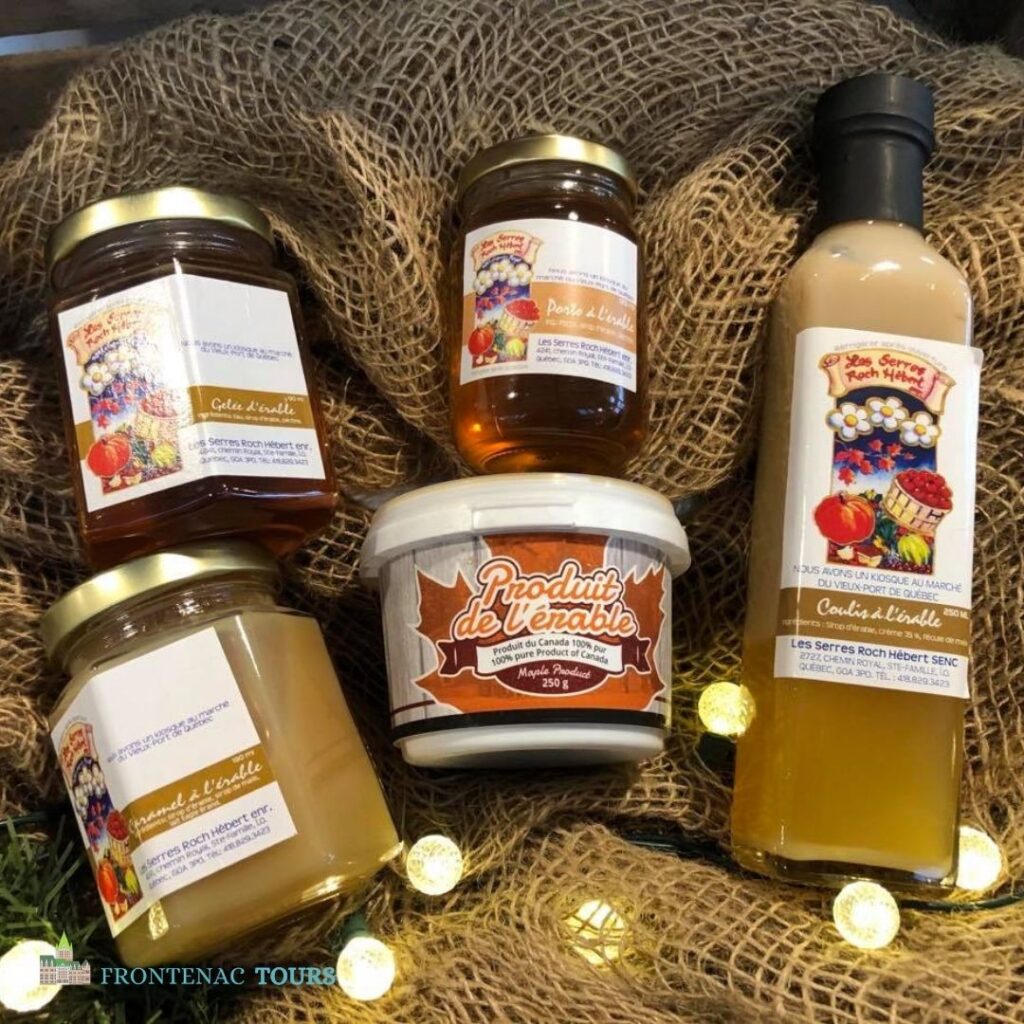
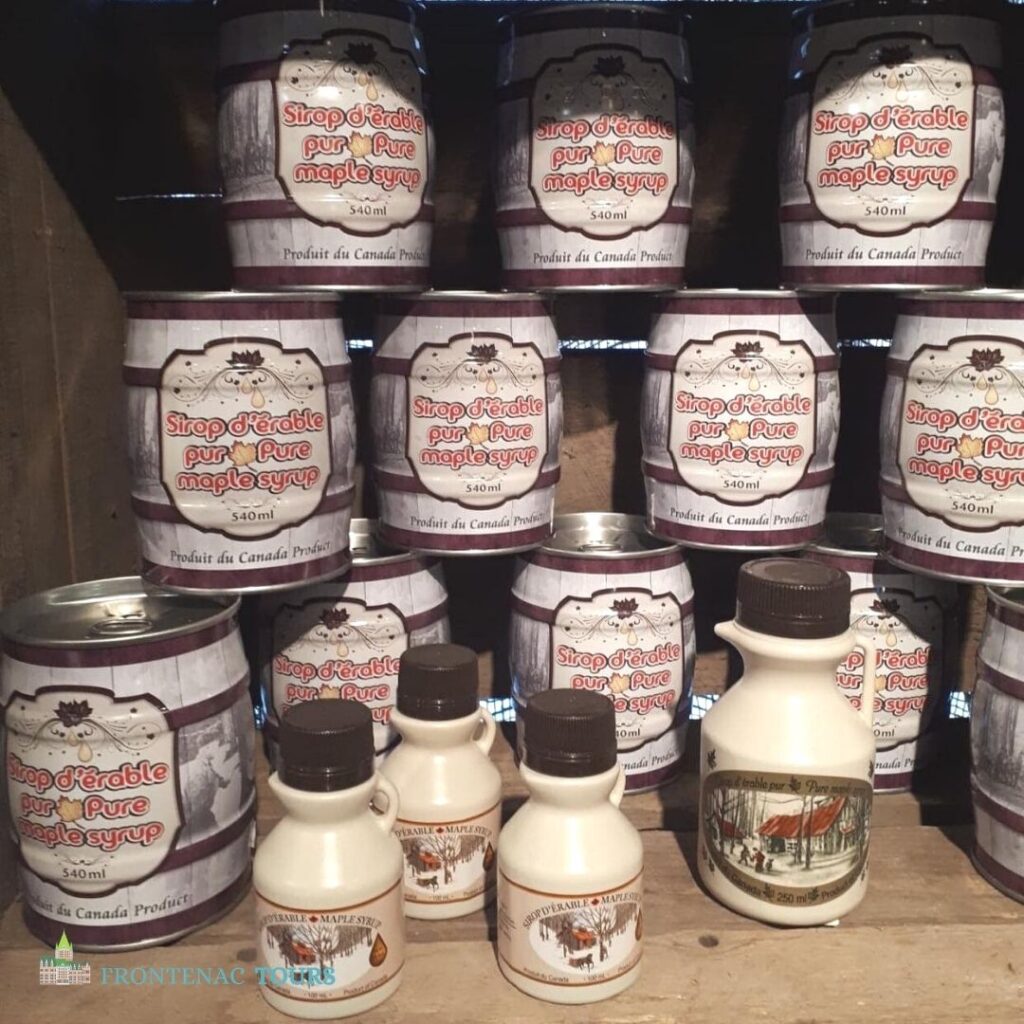

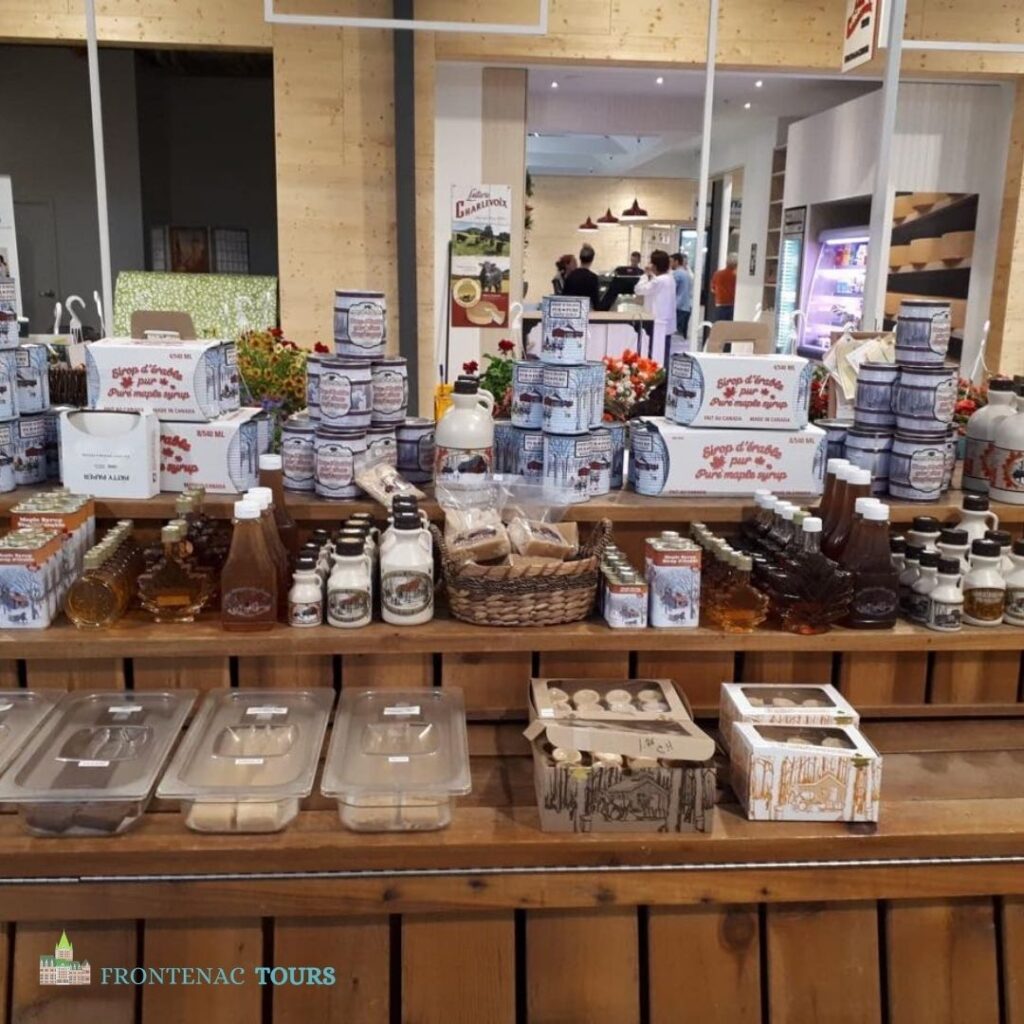
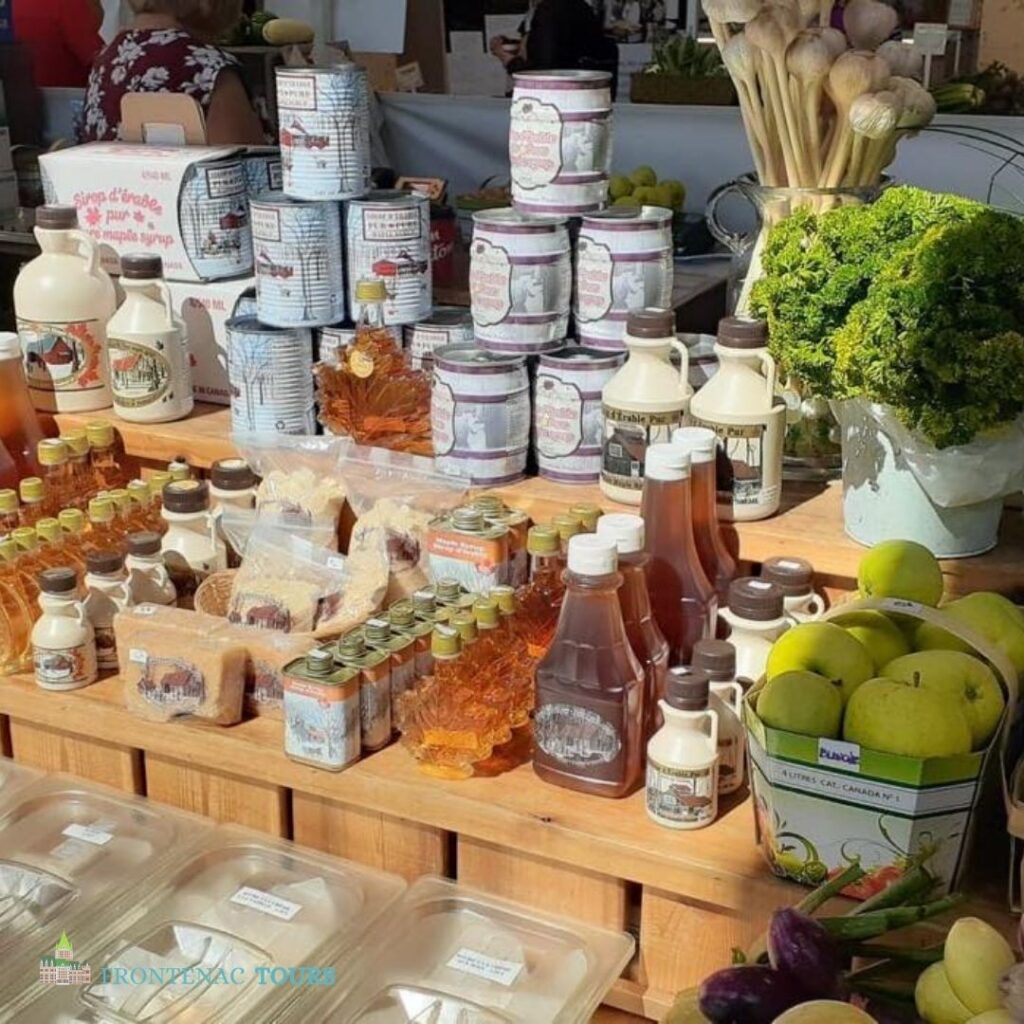
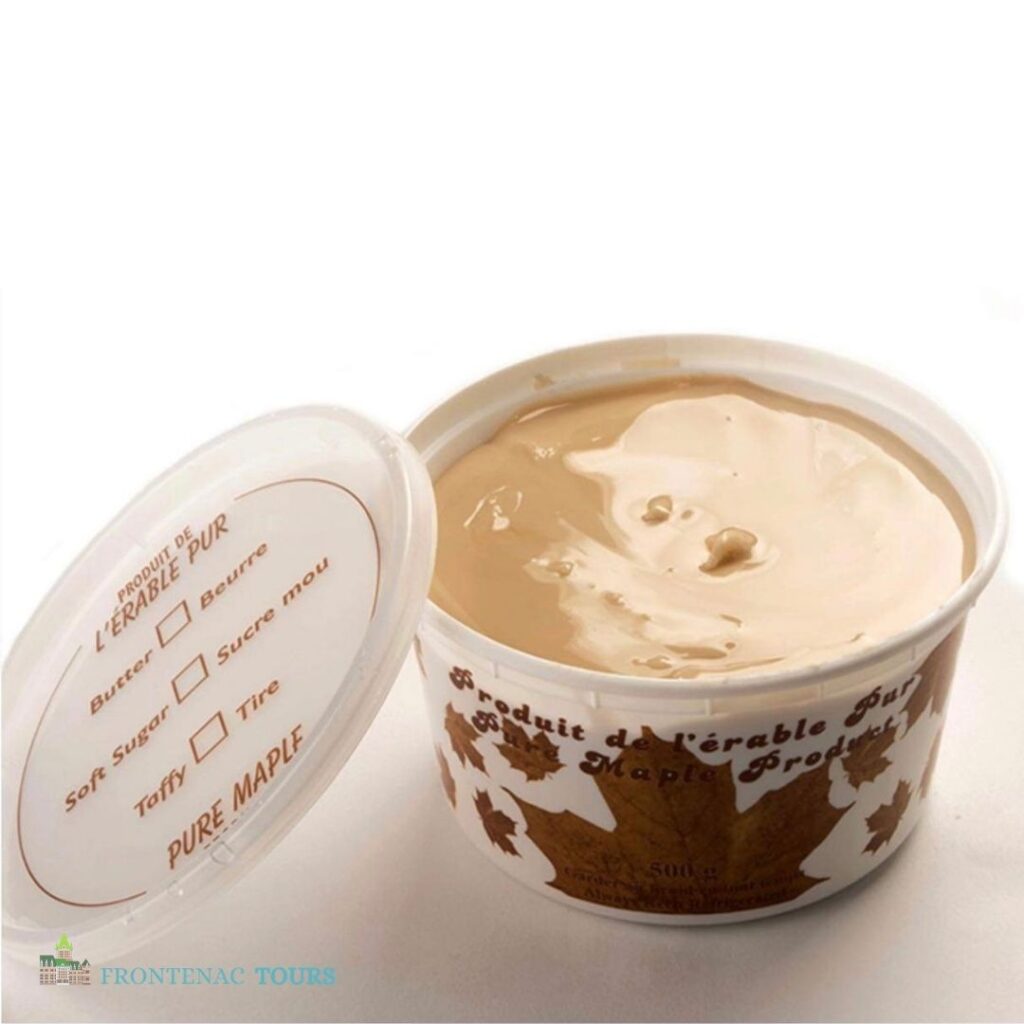
Maple butter
100% pure maple. Although the term butter is used, there is no dairy or butter in it … It’s the soft, creamy texture that reminds us of the butter. The method for making maple butter is simple: boil the syrup at 232F (111 °C), put the container in ice water and beat the mixture at high speed.
Sugar loaf
Sugar loaf or sugar of the country. 100% pure maple syrup boiled at 244F (117 °C), 1 minutes in an ice bath, crystallization and molding.
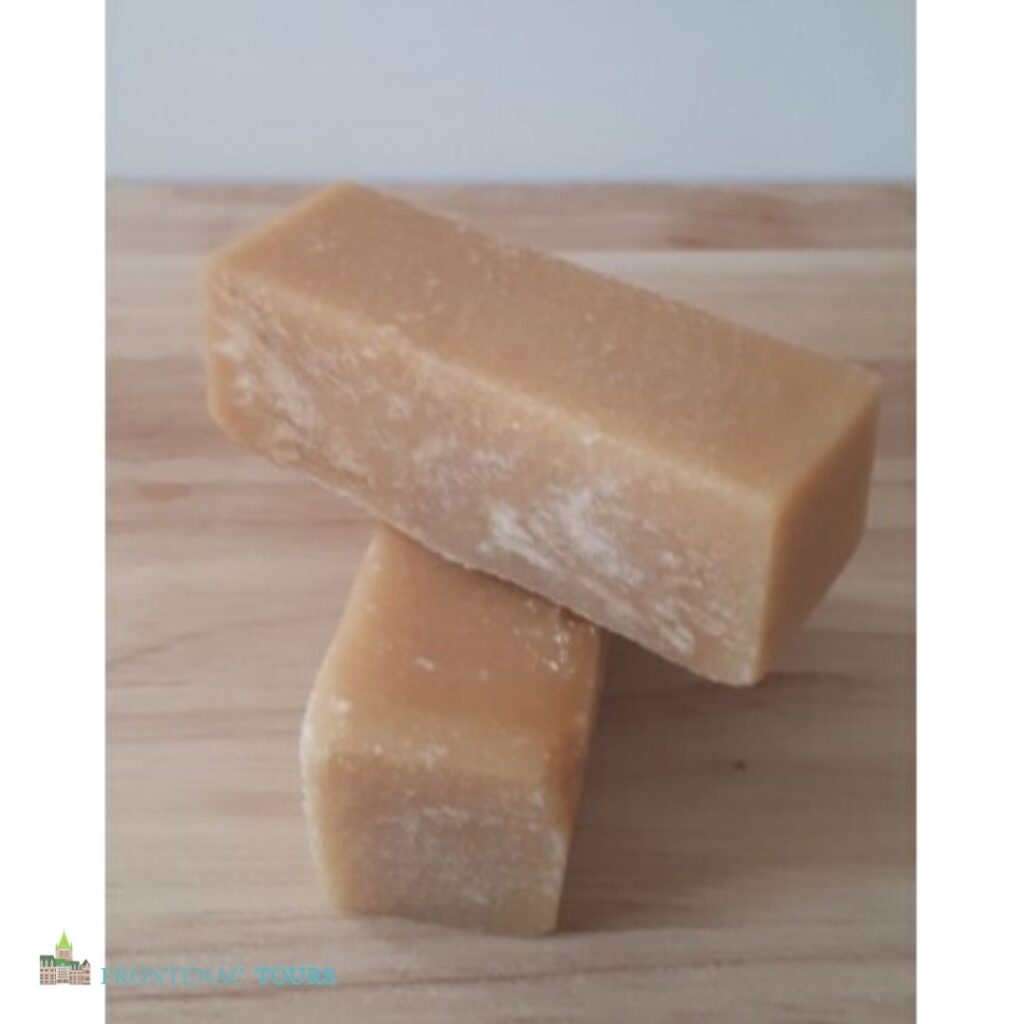
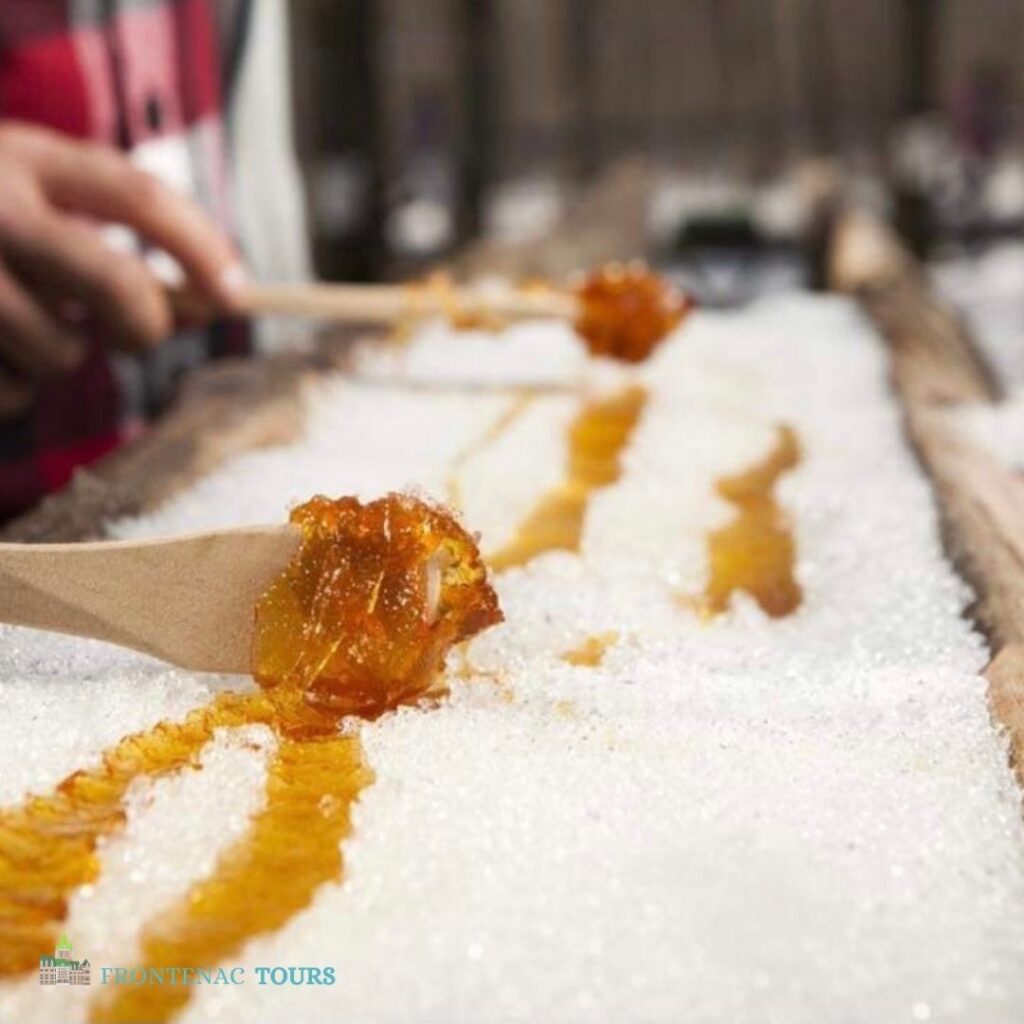
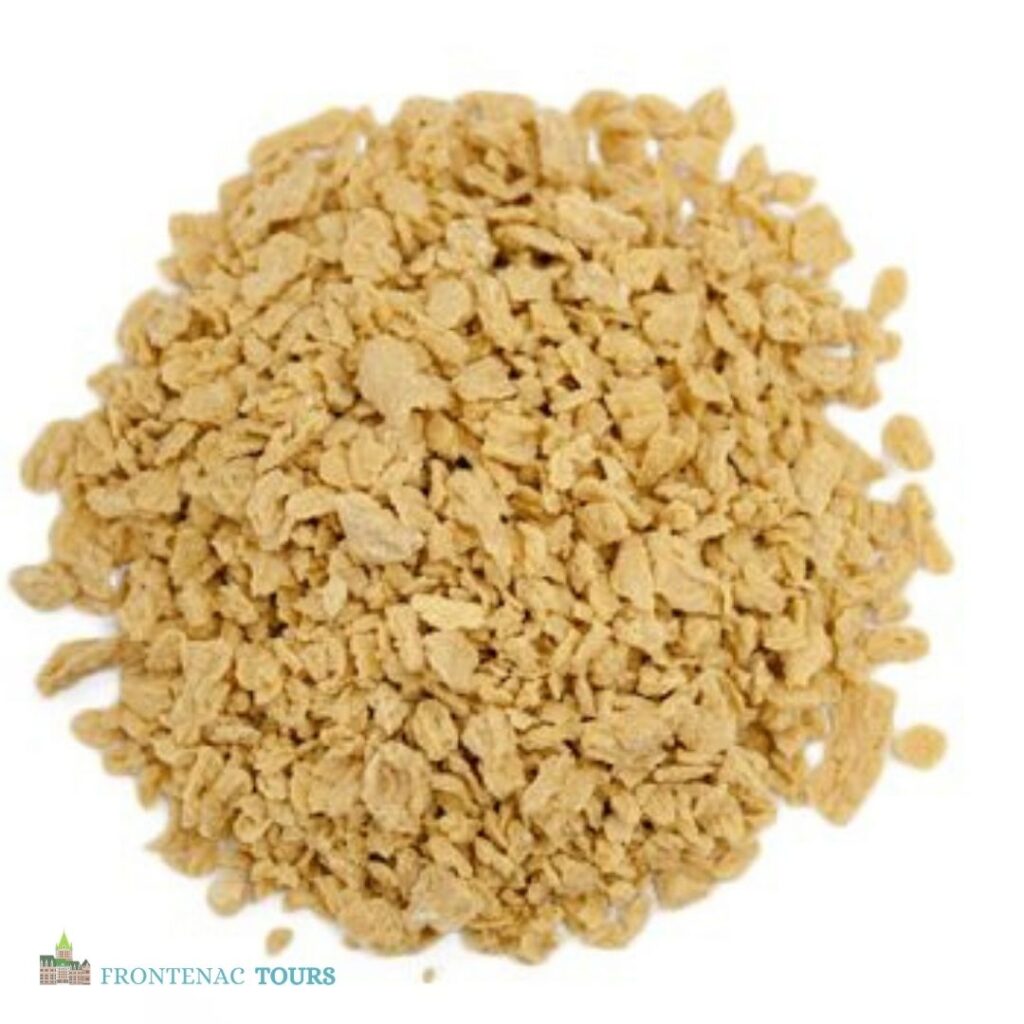
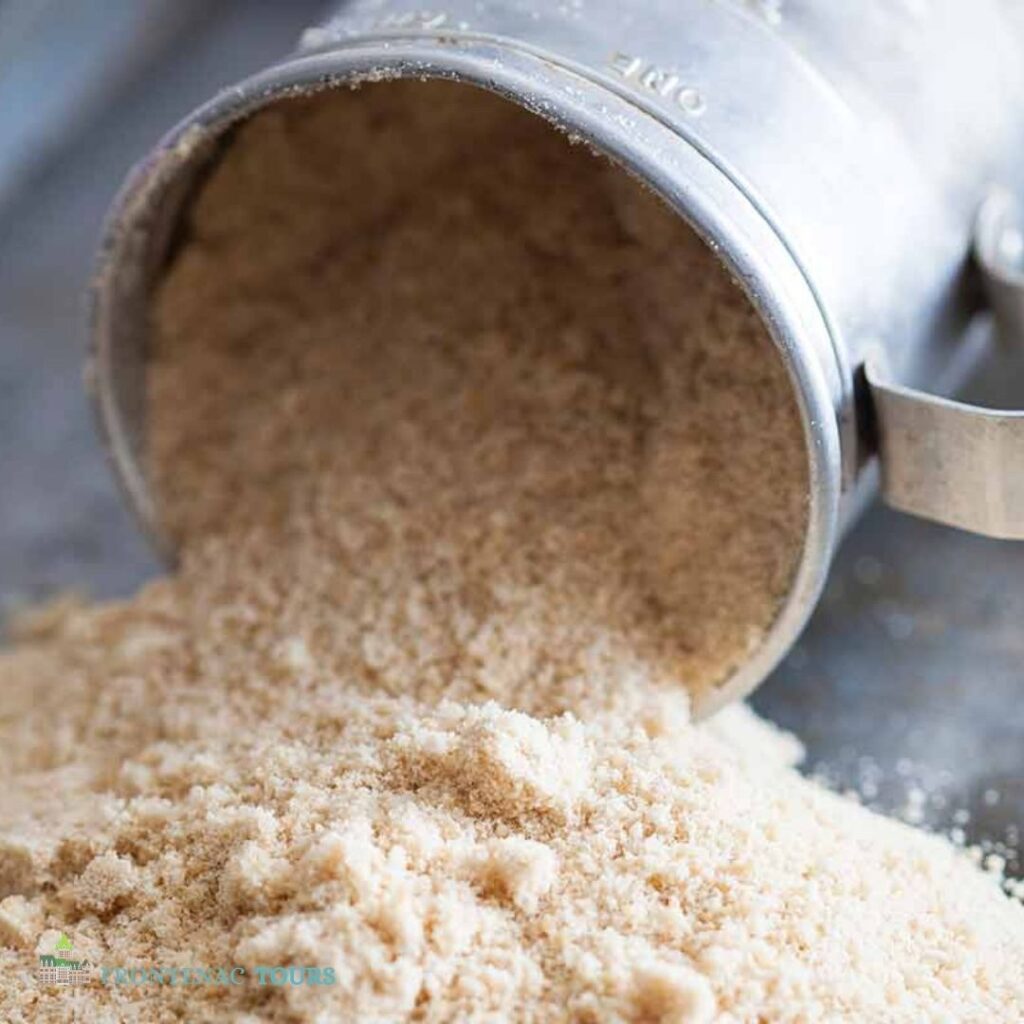
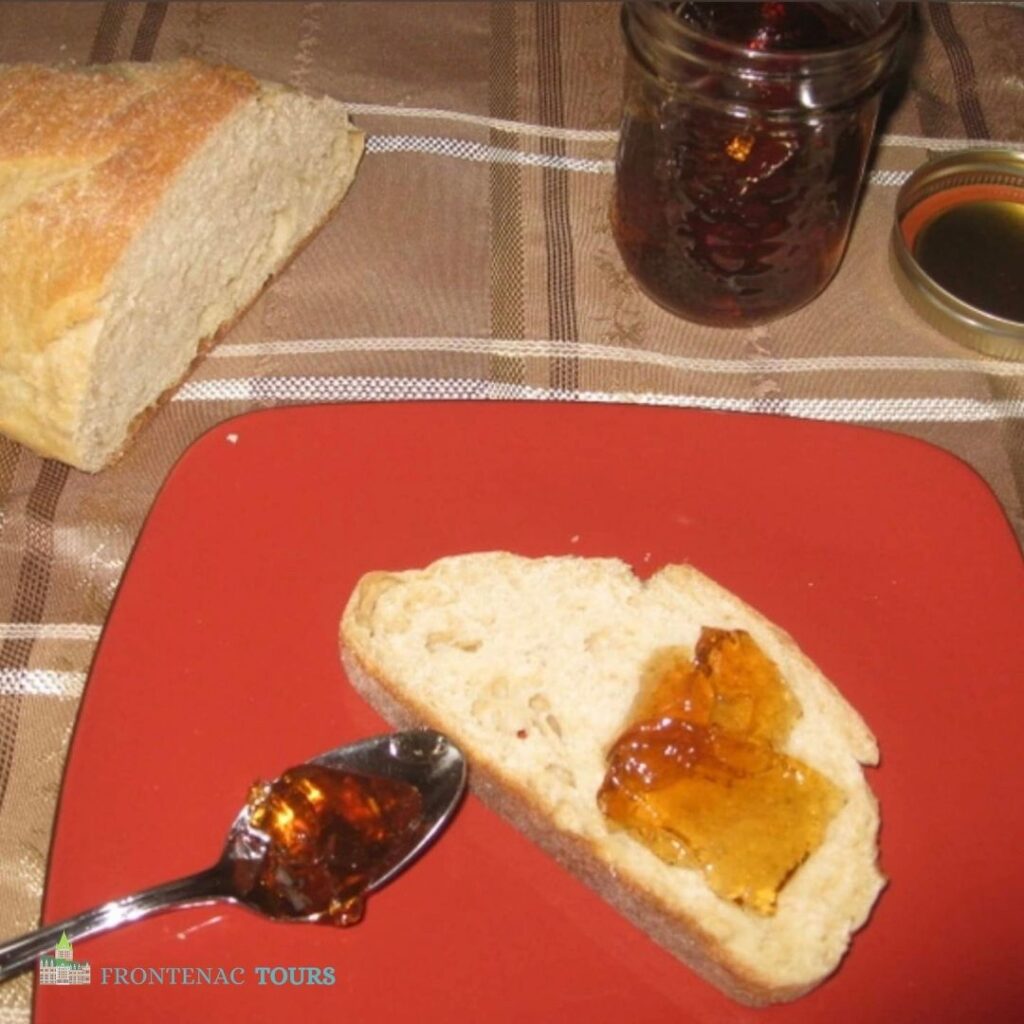
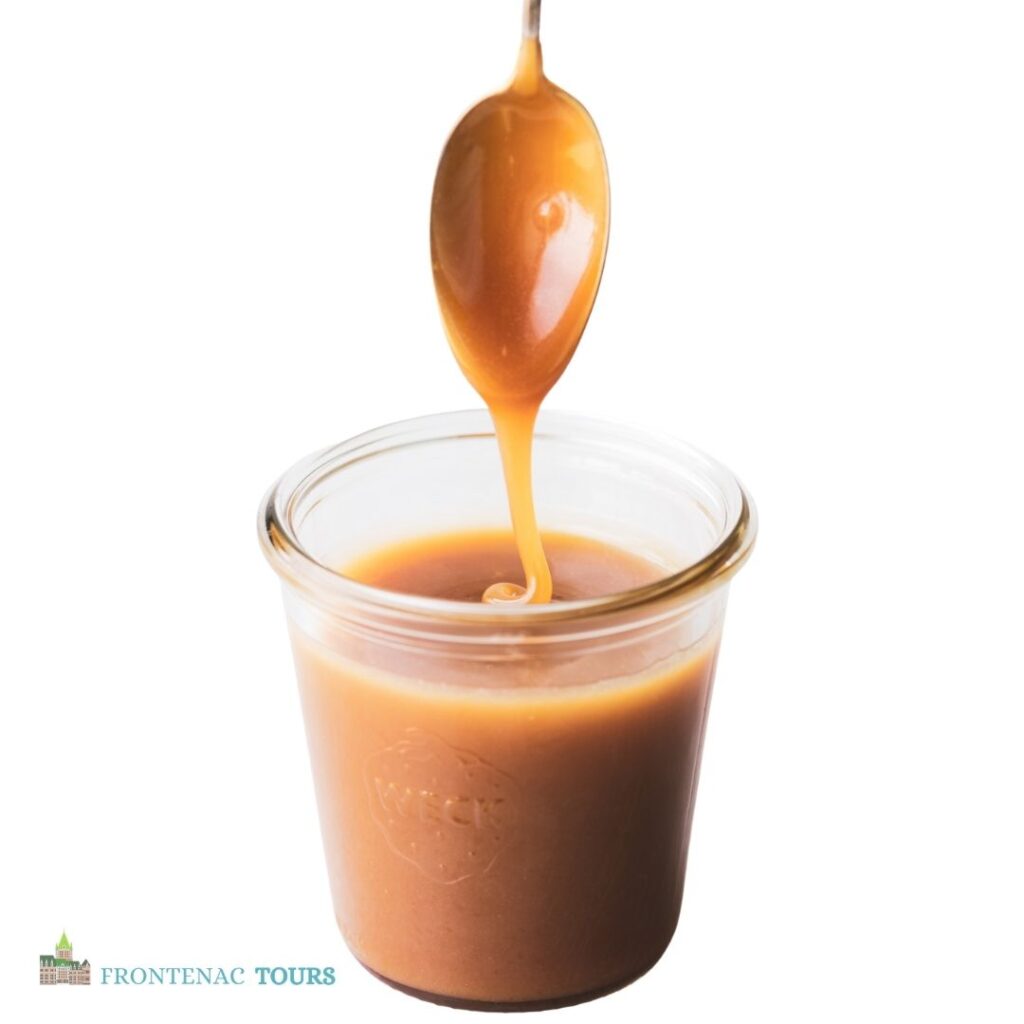
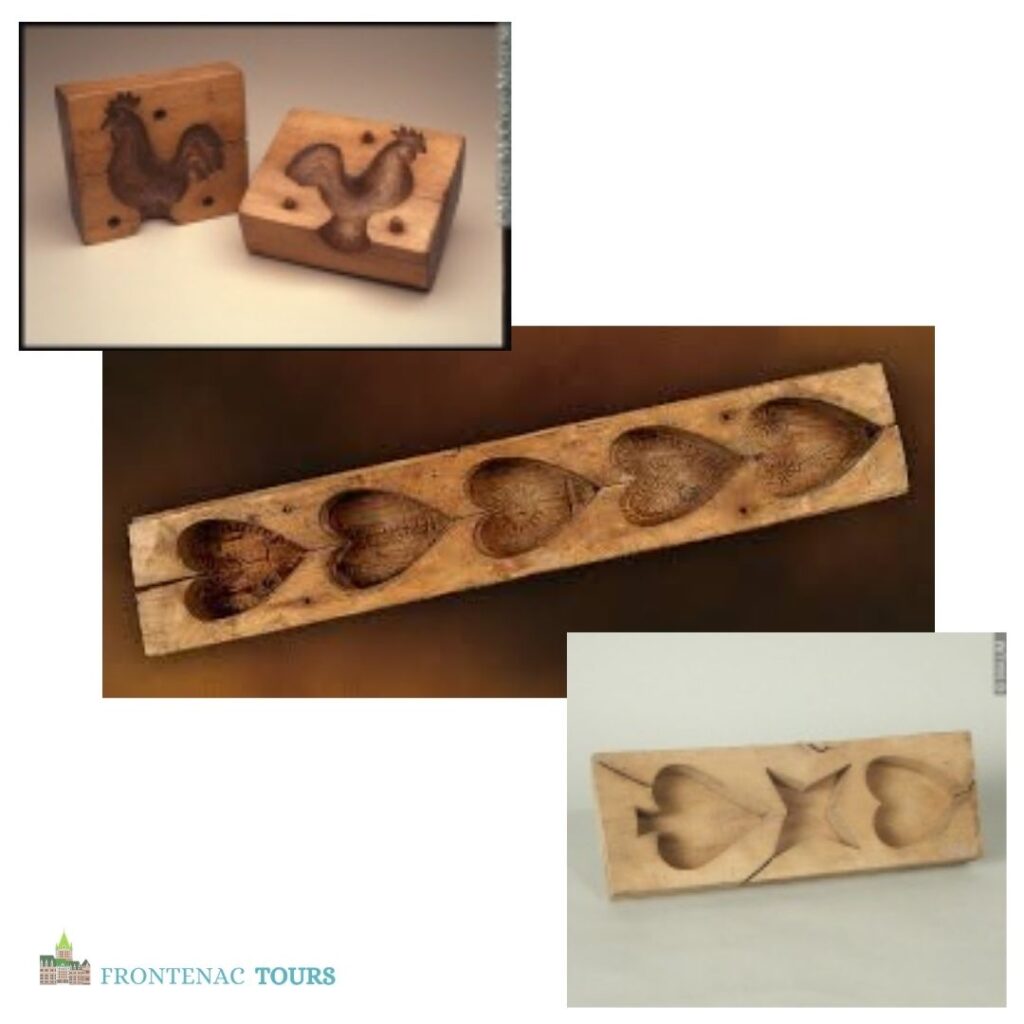
For maple products: The Roch Hébert greenhouses of Sainte Famille Ile d´Orléans or at the Grand Marché in Quebec from March 27. You can pre-order your maple products by sending them an email at hebert6@videotron.ca
Thanks to Richard Lessard from l’Érablière du Lac Beauport for using some of their texts and photos.
Thanks to Danielle and Roch Hébert for the information to deepen my texts.
Thanks to Marie-Pier l’Heureux for her photos and video of the Érablière du Lac Beauport meal.

St. Patrick's Day
You May Also Like
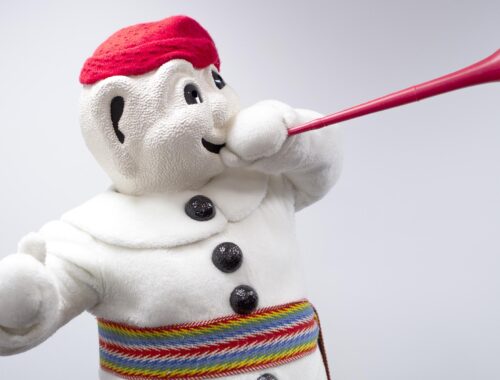
Winter Carnival in Quebec City
3 February 2021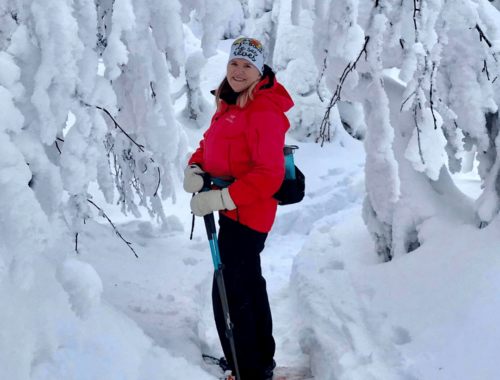
My Quebec in winter
16 February 2021



